Inbox and Environment News: Issue 469
October 11 - 17, 2020: Issue 469
Spring In Pittwater 2020
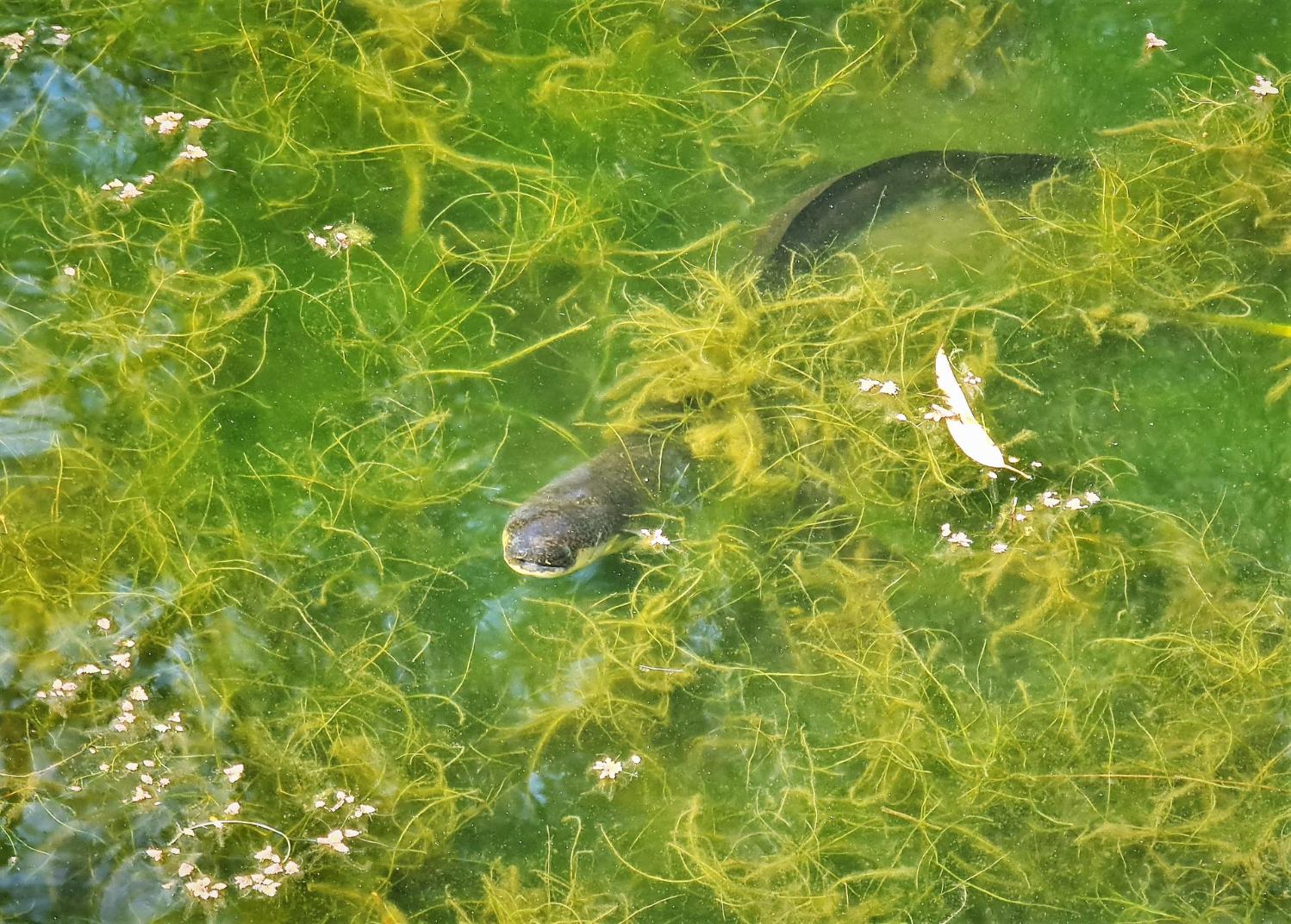
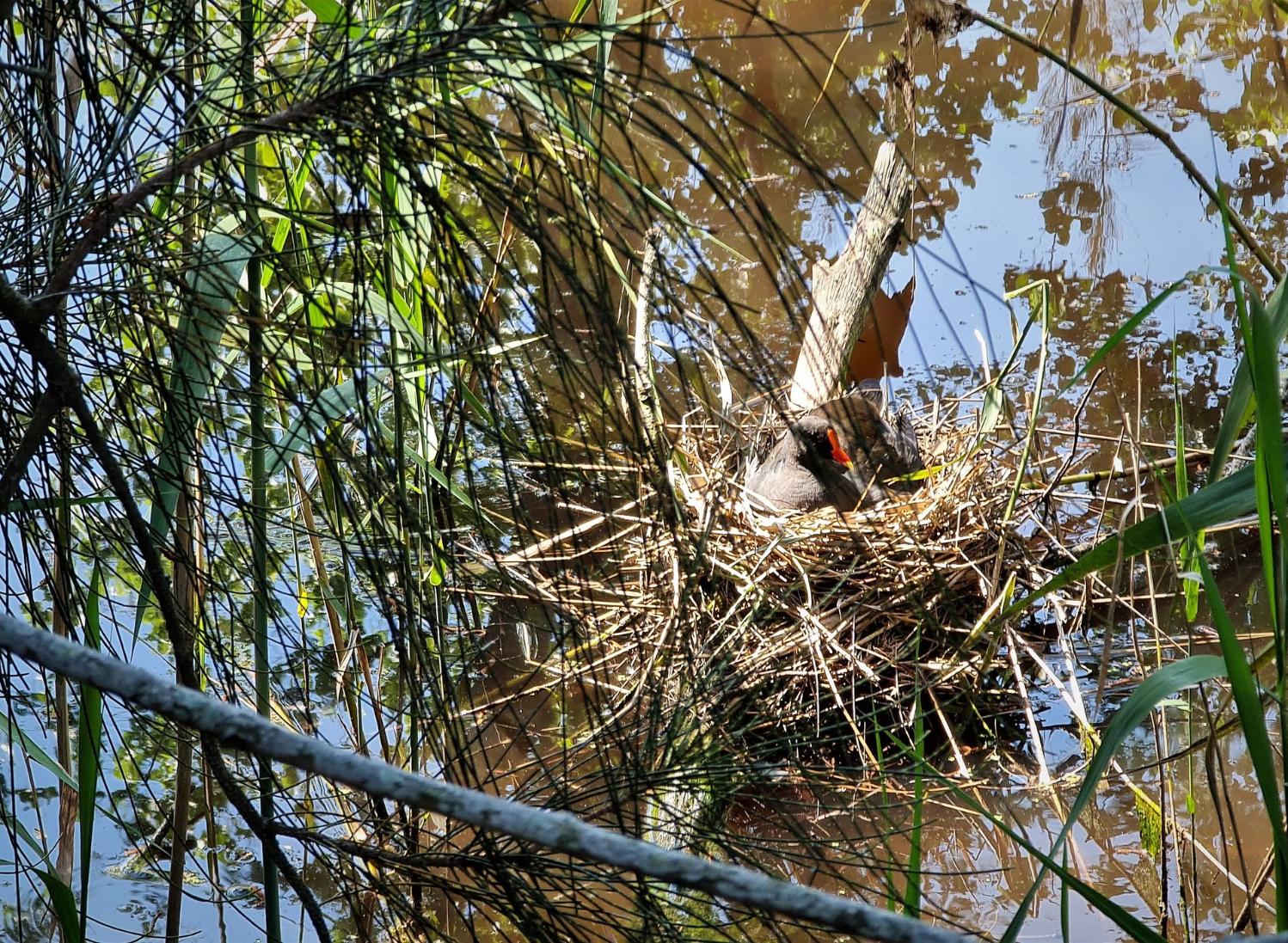
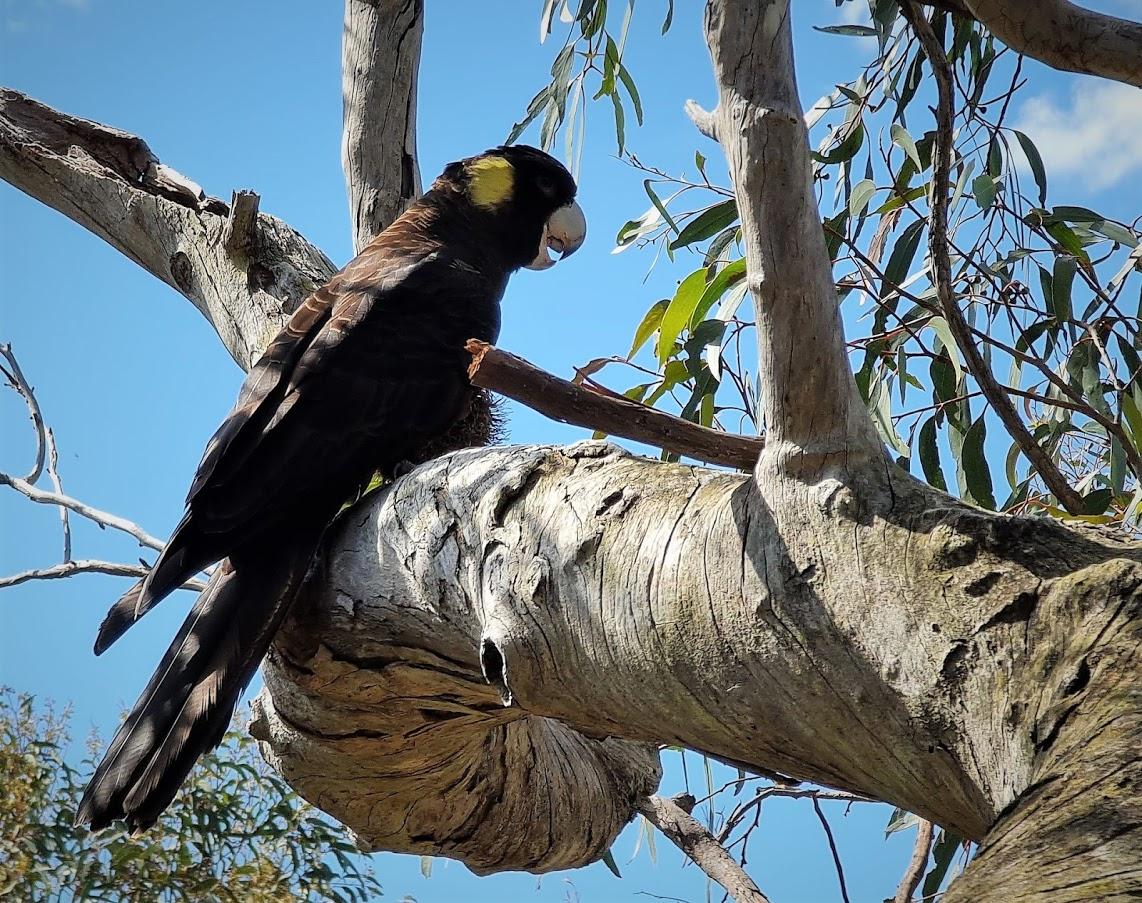
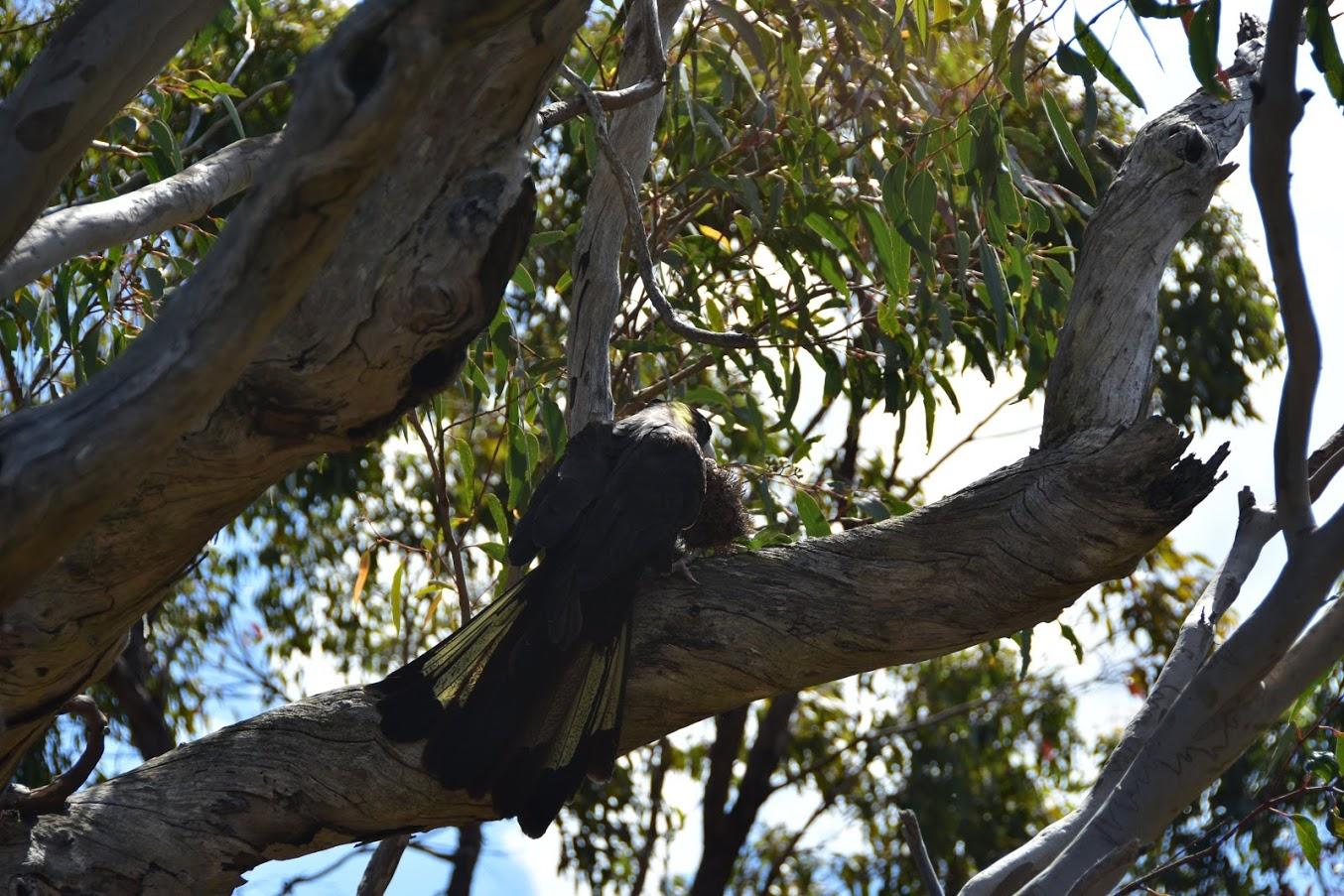
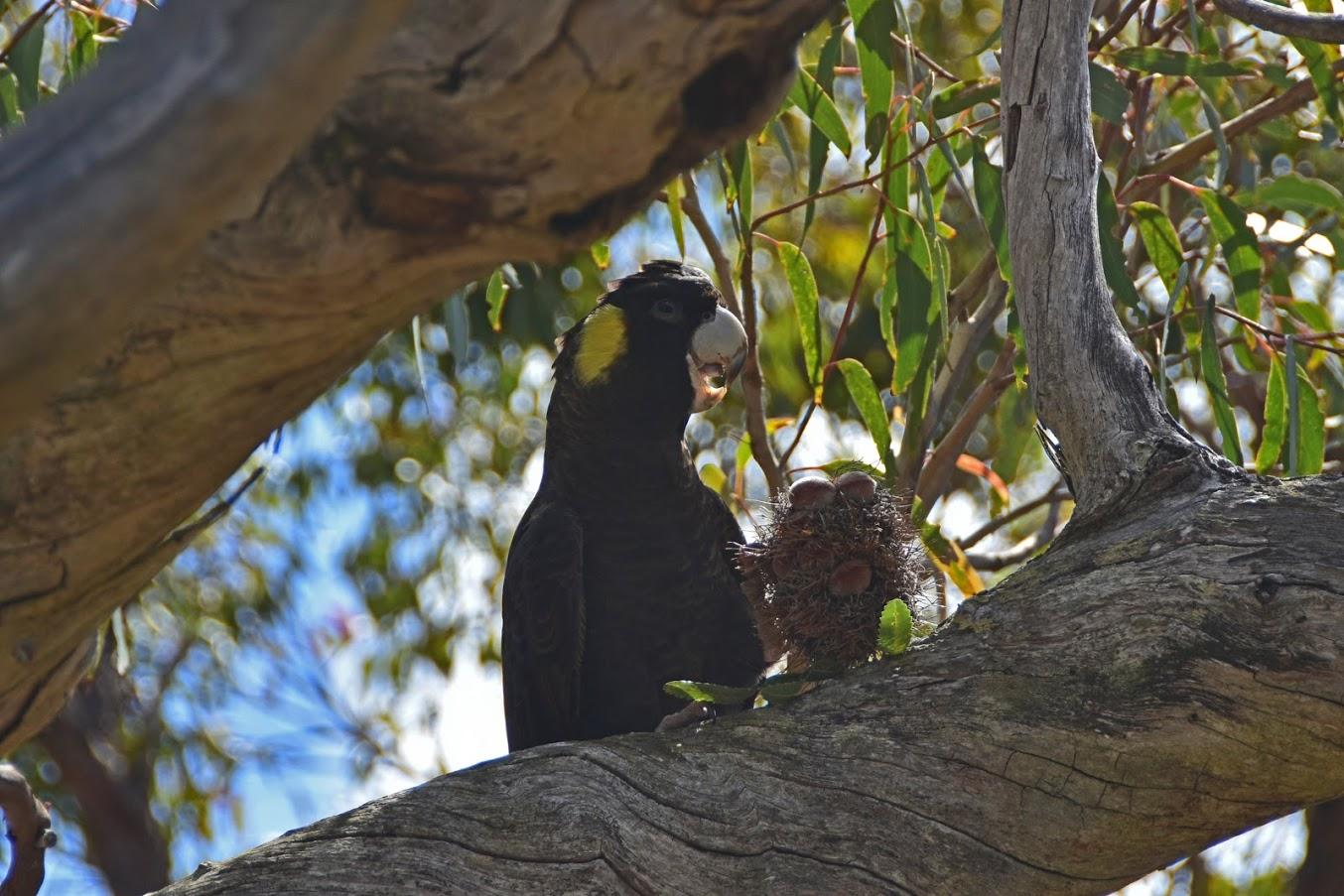
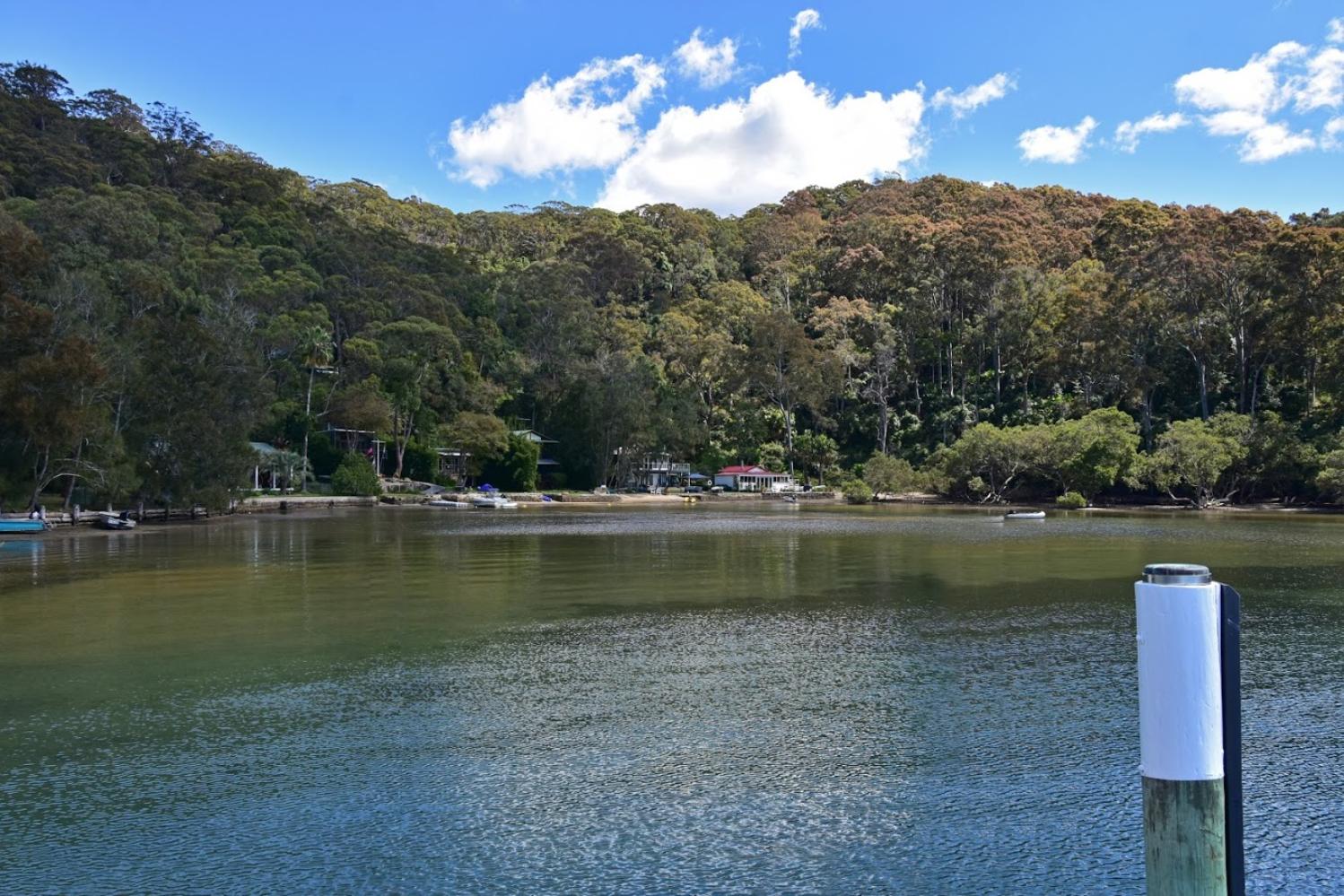
Aussie Back Yard Bird Count 2020
How to get involved
The Aussie Bird Count is a great way to connect with the birds in your backyard no matter where your backyard happens to be — a suburban backyard, a local park, a patch of forest, down by the beach, or the main street of town.
You can count as many times as you like over the week, we just ask that each count is completed over a 20-minute period. The data collected assists BirdLife Australia in understanding more about the birds that live where people live.
Register here: https://aussiebirdcount.org.au
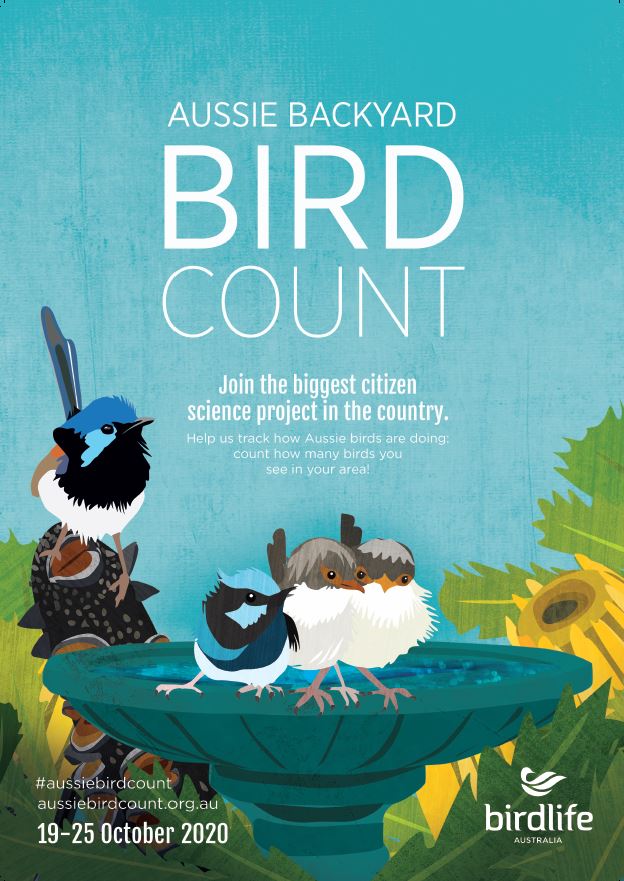
600+ School Strike For Climate Events Take Place In Biggest-Ever National Action Against Gas
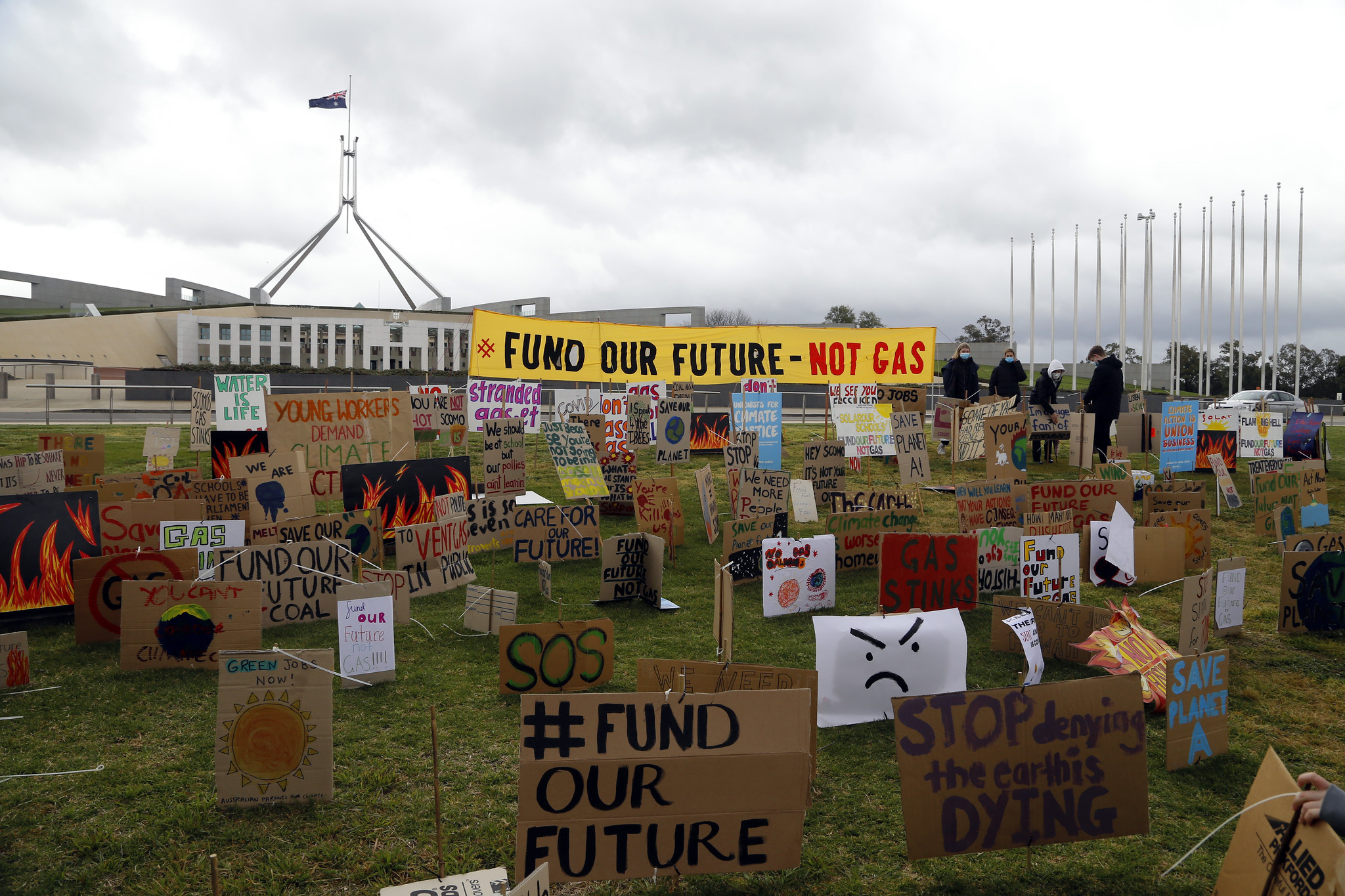
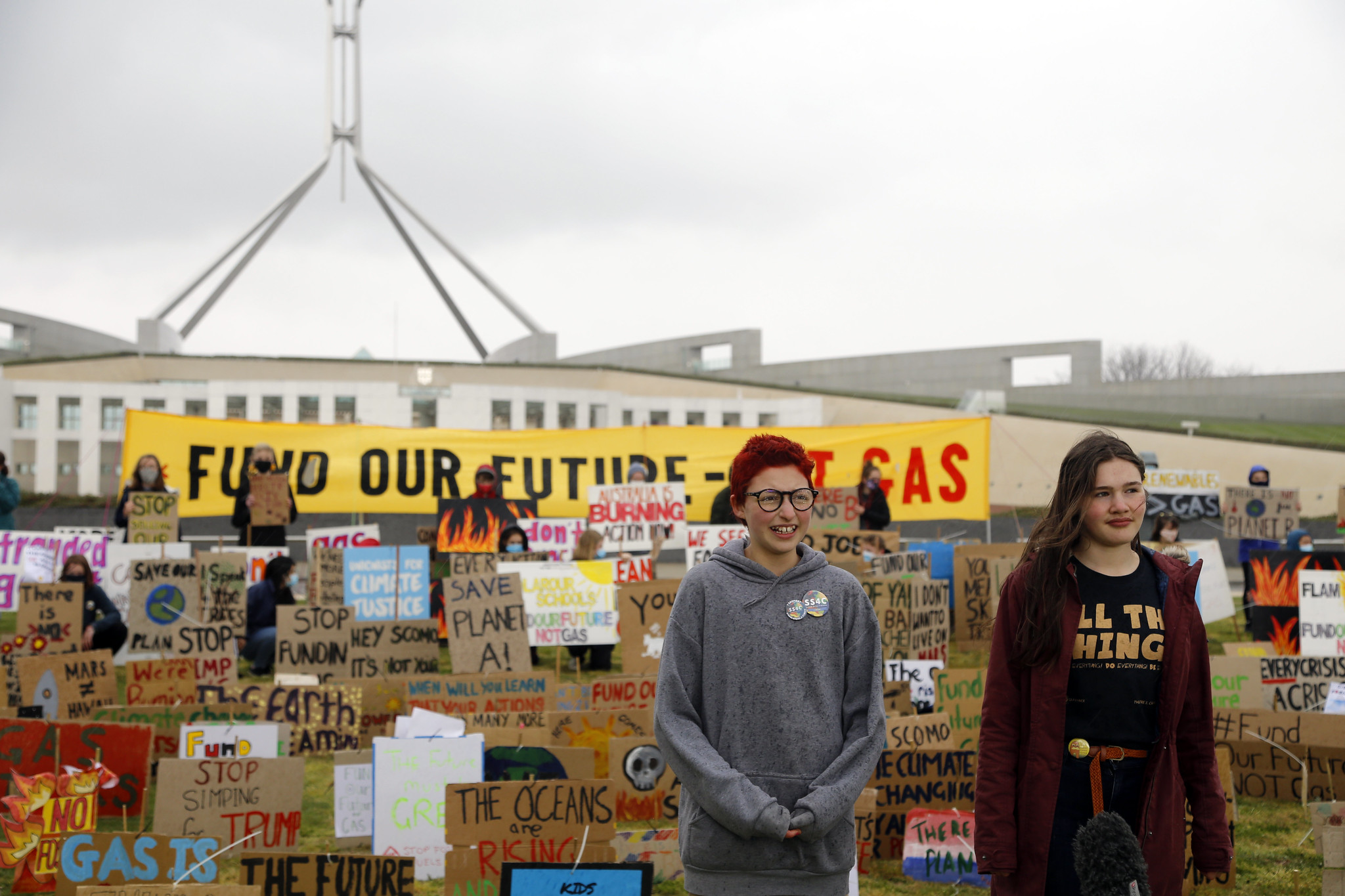
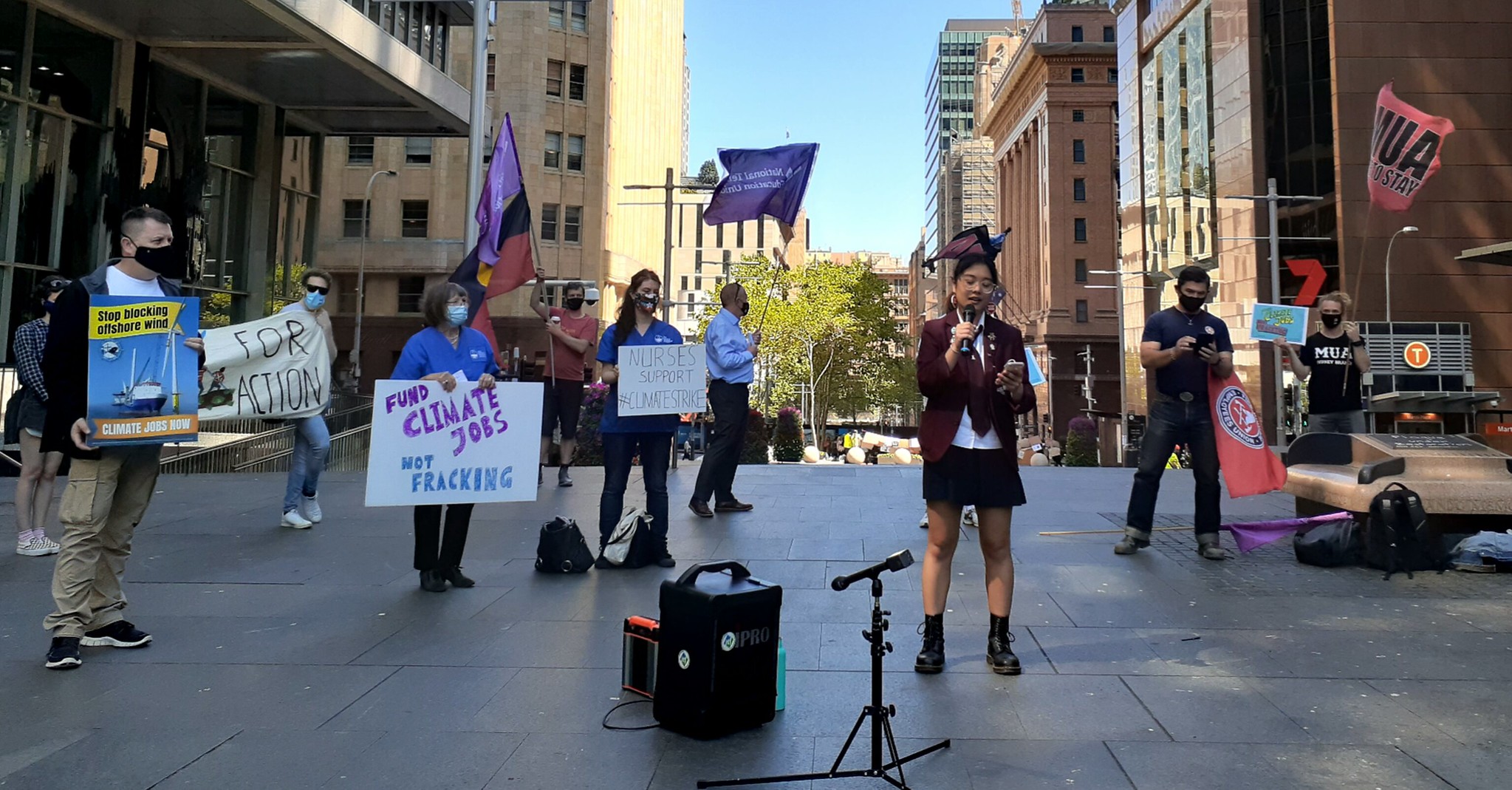
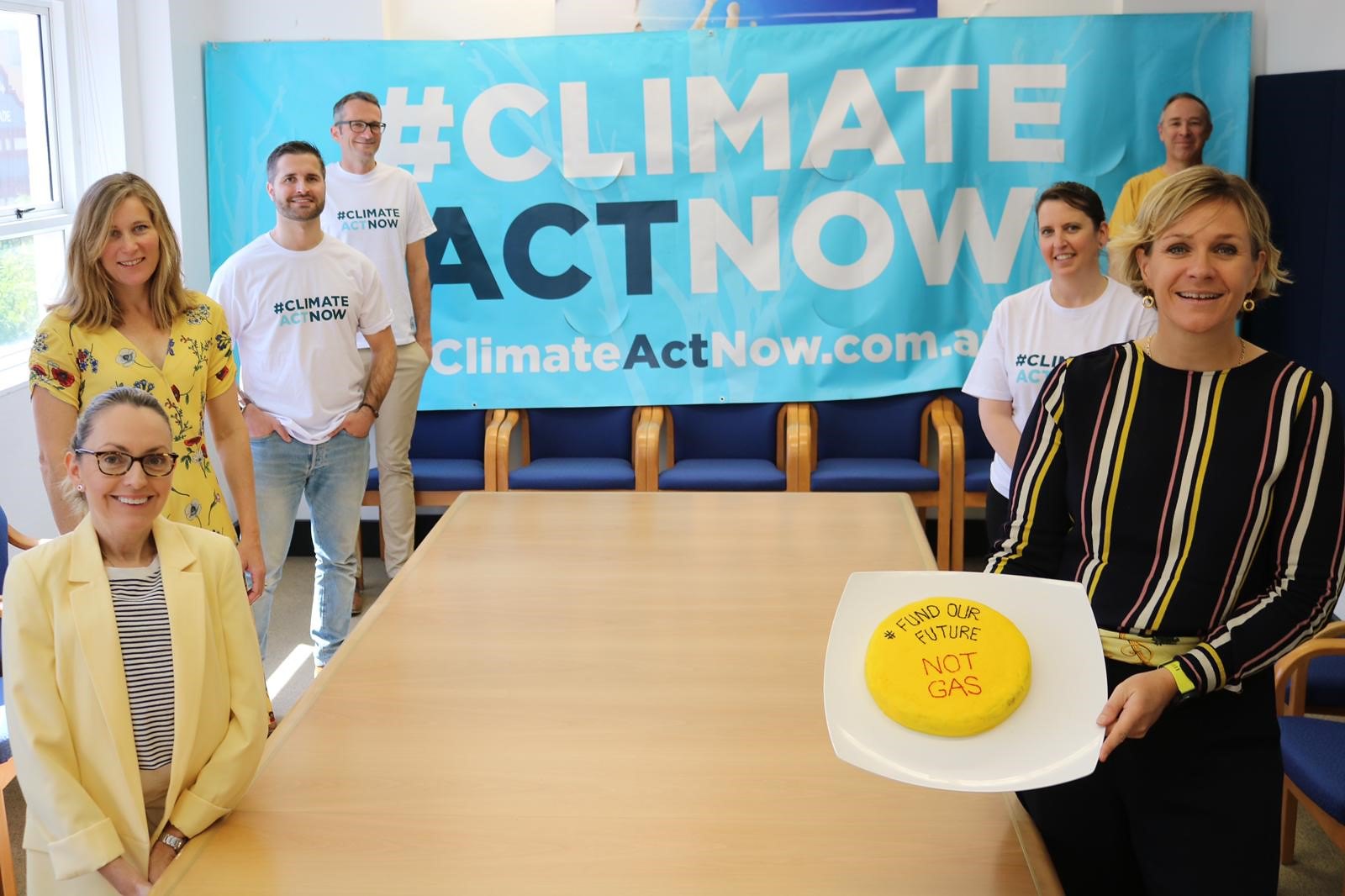
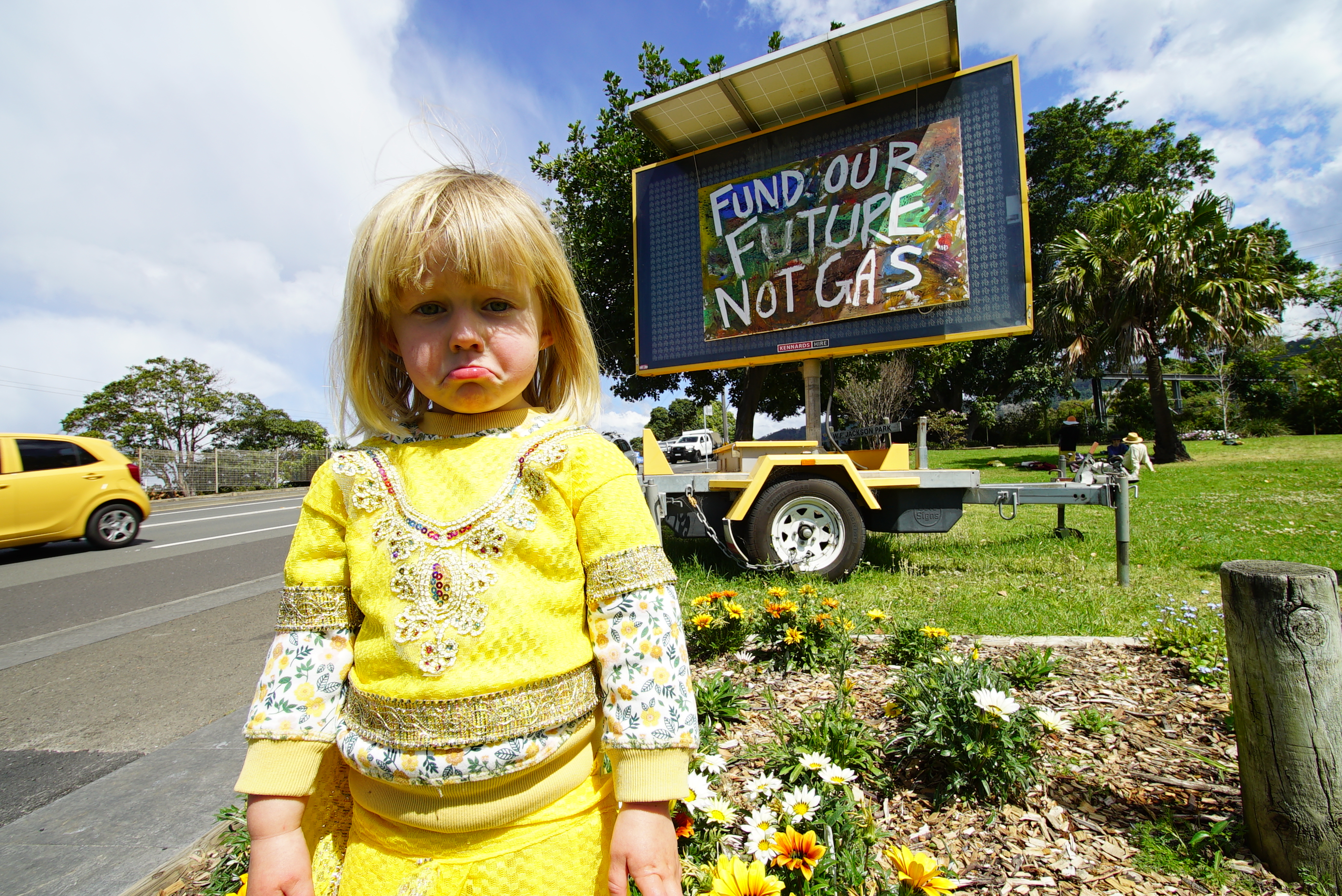
Farmers And Traditional Owners Will Continue To Fight Santos Coal Seam Gasfield
September 30, 2020
Farmers and Gomeroi Traditional Owners fighting the Santos Narrabri coal seam gasfield will ramp up the battle to protect their lands and precious water resources despite today’s disastrous IPC decision.
They have taken aim at the Berejiklian and Morrison Governments who they say have failed to listen to the community and protect groundwater from coal seam gas.
Gomeroi woman Polly Cutmore said, “Our people don’t want this gasfield and we are here to tell the government, Santos and their investors that will keep on fighting it. The Pilliga is Gomeroi land and Santos is not welcome there. We will never stop fighting to protect the Pilliga and protect Gomeroi country from coal seam gas.”
Coonamble stock and station agent David Chadwick said, “The Commission has made the wrong decision and they have made it based on bad laws and bad politics that promote coal seam gas. This decision puts the groundwater resources we rely on in the firing line of this destructive coal seam gas industry.
“The Morrison Federal Government and Berejiklian State Government were both so hell-bent on this polluting gasfield going ahead. Clearly that kind of pressure has drowned out the community’s clear rejection of the industry and the warnings of scientists about the threat it poses to our groundwater.
“The National Party in particular has utterly betrayed its traditional supporter base. The appalling display of contempt by the Nationals for the communities the party claims to represent is untenable.
“The Commission has made a terrible mistake and has condemned our region to having to keep fighting this destructive industry. Which we will.
“Coal seam gas is mother nature’s melanoma, and to pursue this sunset industry over agriculture and food production is just unbelievable.
“It is up to every Australian to stop this contempt for communities held by governments and gas companies. Our livelihoods depend on it.”
Lock the Gate spokesperson Georgina Woods said, “Responsibility for this disaster lies squarely with the government. Planning Minister Rob Stokes gave the Commission a few short months to consider a huge range of complex issues and the views of over 11,000 people that made submissions.
“Information about leaks and spills occurring right now in the Queensland coal seam gasfields were ignored by the Commission and requests for independent expert advice about groundwater and greenhouse emissions were refused because of the impossible timeline imposed on the Commission by Minister Stokes.
“Experts warned the commission that this gasfield threatens underground water supplies, farmland, and the stressed koalas of the Pilliga, that it will create dangerous amounts of greenhouse pollution and fuel climate change, that Santos’ modelling and assessment were flawed and superficial.
Mullaley farmer Robyn King said she and Narrabri locals opposed to the project would not give up.
“This is the fight of our lives and we can’t afford to give it up. We owe it to the generations that come after us to stop Santos from wrecking this region,” she said.
“We will not sit back and passively accept this politically-influenced decision.”
Background and going forward:
- Originally proposed by Santos in 2011, the Narrabri Gas Project was formally supported by the NSW Department of Planning in May 2020, despite receiving 22,484 (98%) submissions opposing the project, the largest number of objections ever received by a NSW development.
- The project involves Santos drilling 850 coal seam gas wells on 1,000 hectares of a 95,000 hectare site that spans across the Pilliga forest - a sacred place for Gomeroi/Gamilaraay people - and nearby grazing land.
- If built, it is estimated the total greenhouse gas emissions produced by the project could be 127.8 million tonnes of carbon dioxide equivalent.
- The CSG wells would be drilled through a recharge aquifer for the Great Artesian Basin, known as the Pilliga Sandstone.
- The risk of drawdown and inter-aquifer leakage in the Namoi alluvium is considerable, and likely to be greater than what has currently been modelled by Santos.
- Santos’ project would be a trojan horse for other unconventional gas projects due to the existence of ‘zombie licences’ covering a huge area of north west NSW from Dubbo to the QLD border. Despite National Party members voting to have these licences permanently cancelled, the NSW Government has failed to act, meaning the licences could be re-activated.
- In the Pilliga, Santos has already been fined for contaminating an aquifer with uranium and other heavy metals and for a spill of 10,000L of wastewater that caused a forest ‘dead-zone’ which is still un-remediated more than a decade later.
- Wastewater could produce up to 840,000 tonnes of salty waste with still no known disposal solution. Santos would be required to dispose of this waste within 150km of the project radius.
- Santos has downplayed the risks of bushfire in the Pilliga forest caused by gas flaring, with local RFS units saying they’ll refuse to send volunteers into the gas field to fight fires if the project goes ahead.
Zombie PELS: Farmers’ Worst Fears Confirmed As Gas Companies Seek To Raise Expired Permits From The Dead
October 9, 2020
North west NSW farmers say their worst fears are being realised as gas companies announce plans to raise so-called “zombie-PELs” from the dead in response to the Independent Planning Commission’s decision to greenlight the Santos Narrabri gasfield.
The day after the IPC published its decision on the Narrabri gasfield, Comet Ridge, a joint partner with Santos that owns zombie licences PEL 6, PEL 427, and PEL 428, released a statement to the ASX welcoming the approval and announcing it “anticipates a return to exploration and approval” of two of its three dormant licences in the north west.
Zombie PELs are petroleum licences that have expired, but have not been formally extinguished by the NSW Government. There are 12 of these licences that stretch across 56,000km2 between the Queensland border, Dubbo, Moree, the Warrumbungles, and the Upper Hunter.
National Party members voted to have these licences extinguished last year, yet the NSW Government failed to act, meaning the licences can be re-activated.
The move by gas companies also comes after the Morrison Government labeled the entire Gunnedah Basin as a target for its plans to sink taxpayer money into propping up five polluting gasfields across the country.
“It’s what we feared would happen if the Narrabri gasfield was approved, and it’s shattering news to hear these gas companies and the Morrison Government are so eager to put our land, water and communities at risk,” said Mulalley farmer Margaret Fleck, whose property is included in PEL 12, owned by Santos’ joint venture partner Carbon Minerals.
Carbon Minerals itself released a statement earlier this year flagging investment in its zombie PELs in the north west.
“A huge area of land across north west NSW is now at serious risk of being transformed into industrial gasfields, as we have seen in the Surat Basin in Queensland,” Ms Fleck said.
“This means we could face the same problems as farmers further north - drained and contaminated groundwater, huge areas of land cleared and pockmarked with unconventional gas wells, and the need for companies to dump mammoth amounts of toxic CSG waste.”
Lock the Gate Alliance NSW spokesperson Georgina Woods said the Berejiklian-Barilaro Government should have stamped out these licences long ago, just like it had done with CSG licences closer to the coast.
“These companies have sat on these licences for years, creating uncertainty for farmers and communities who just want to get on with their lives without the threat of destructive CSG hanging over their heads,” she said.
“Many of these companies have failed to comply with NSW law by simply sitting on these licences and doing nothing with them for so many years, so the government has every opportunity to cancel them and give farming communities some certainty.
“Local members representing these farming communities should listen to the concerns of their constituents and ensure the government permanently slays these zombie licences.”
Federal Environment Poised To Ignore Whitehaven’s Criminal History After New Entity Created
October 8, 2020
Correspondence from Environment Minister Sussan Ley’s Department has indicated Whitehaven Coal’s full history of environmental crimes may not be taken into account during the federal assessment of its Vickery coal mine simply because Whitehaven created a subsidiary company called Vickery Coal. In a letter sent to the Lock the Gate Alliance, Minister Ley’s Department states Vickery Coal’s history will be taken into account, but does not make the same commitment for its parent Whitehaven.
That’s despite the fact Vickery Coal is a wholly owned subsidiary of the company, and the fact Whitehaven only changed Vickery Coal to the proponent of the project two years ago, part way through the assessment process.
The letter was released just as Whitehaven was once again fined this week for environmental breaches - this time at its Werris Creek coal mine near Quirindi for allowing an uncontrolled release of water from a sediment dam during heavy rains.
This latest penalty means that during the last eight years, Whitehaven, or its subsidiaries, have been fined on more than 10 occasions at its north west NSW coal mines and have been prosecuted three times, including two prosecutions that are currently underway (full list here).
These fines and other enforcement outcomes, from March 2012 to August 2020 amount to a total of $100,000. Whitehaven Coal reported a record net profit after tax of $564.9 million for FY2019 alone.
“It’s clear that Whitehaven has engaged in a pattern of behaviour across all of its mining operations flagrantly disregarding environmental laws and conditions,” Lock the Gate Alliance NSW coordinator Georgina Woods said .
“A multitude of fines, which amount to slight slaps on the wrist for Whitehaven, have done nothing to change this company’s behaviour. The company is also now being prosecuted by two different government agencies for serious environmental crimes.
“If this was an average Australian citizen who had committed these crimes, they would be looking at gaol time - they certainly wouldn’t be given a free pass to build another coal mine.
“The Minister must not make herself selectively blind to this history because of corporate trickery and name-switching.” Ms Woods stated
Boggabri local Sally Hunter said, “Sussan Ley's Department seems to be at risk of falling for Whitehaven's attempt to have its vast criminal history ignored. That simply does not pass the pub test.
“If a name change allows them to avoid proper scrutiny, then it makes a mockery of our federal law which is intended to stop repeat offenders and environmental vandals like Whitehaven from being allowed to create more havoc with new operations.
“We are calling on Minister Ley to do what is right by the farmers and communities of the north west and consider the full gamut of Whitehaven’s atrocious crimes when assessing Vickery.
“By anyone’s standard, this should amount to a rejection of this destructive, water draining coal mine proposal.”
Watch Out On The Pittwater Estuary Water Zones & Beaches: Seals Are About
Residents have filmed and photographed the seals living at Barrenjoey as far south as Rowland Reserve and over at Clareville beach in recent days and ask that people keep an eye out for them and ensure they are kept safe from boat strikes and dogs are kept off the beaches they're not supposed to be on.
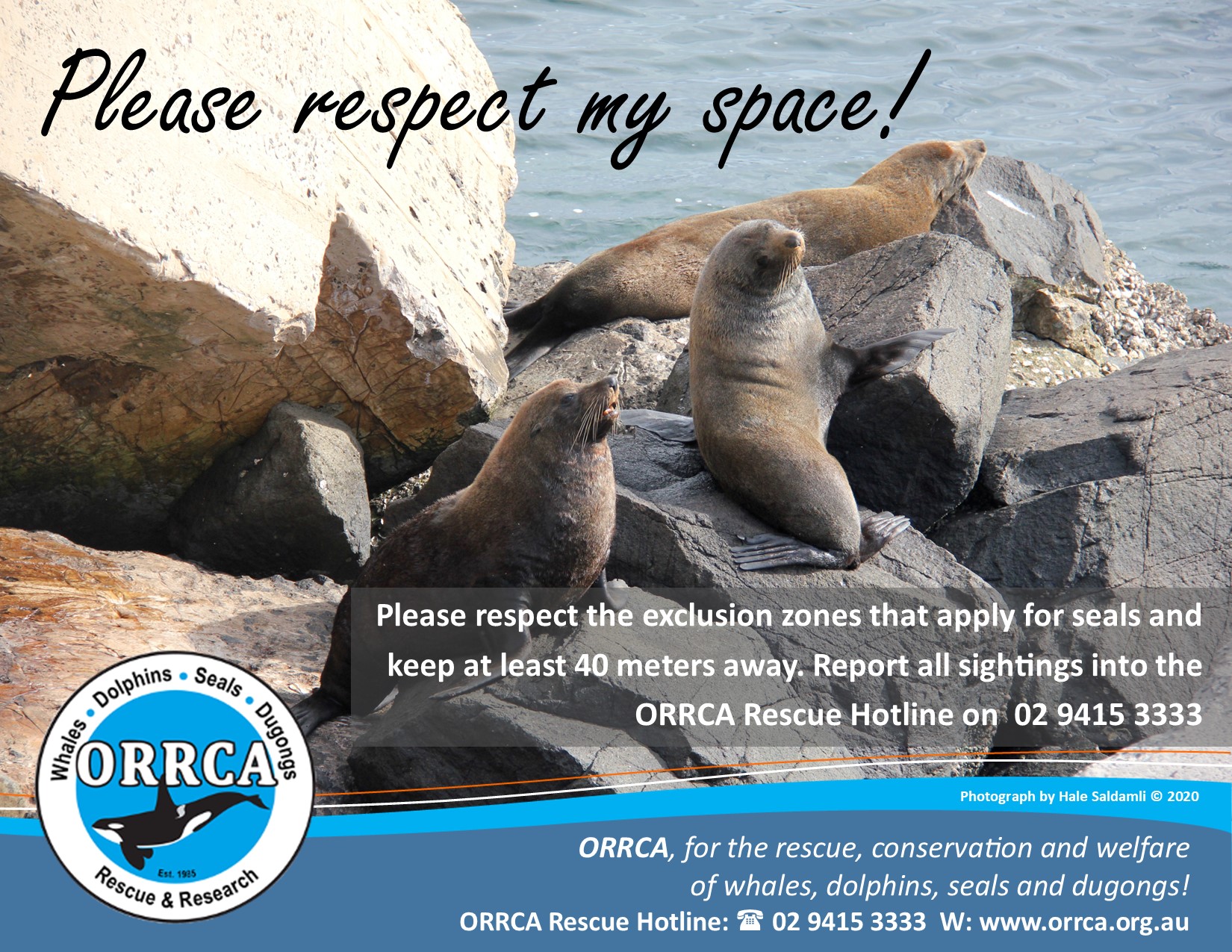
Katandra Season 2020
Katandra Bushland Sanctuary on Lane Cove Rd Ingleside is now open every Sunday until October 25, 10am-4pm. Visitors to this lovely bushland have recently seen Powerful and Boobook Owls, Swamp Wallabies and Lyrebirds. Visitors, please make a small donation towards management of this Crown Land reserve. More details: http://www.katandra.org/home.htm
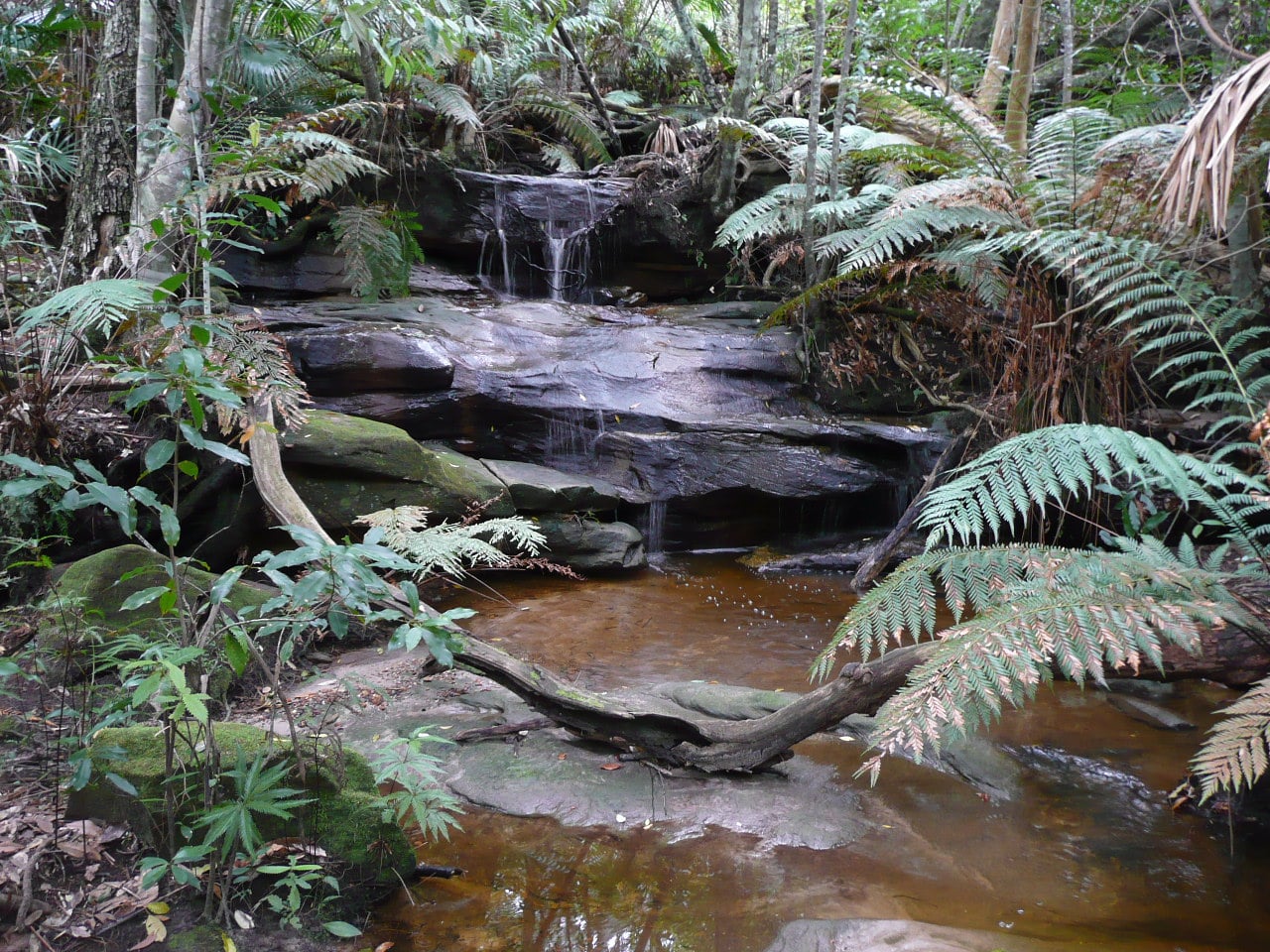
Several creeks flow down the escarpment - photo by Marita Macrae
'Backwards' federal budget: Morrison government never fails to disappoint on climate action
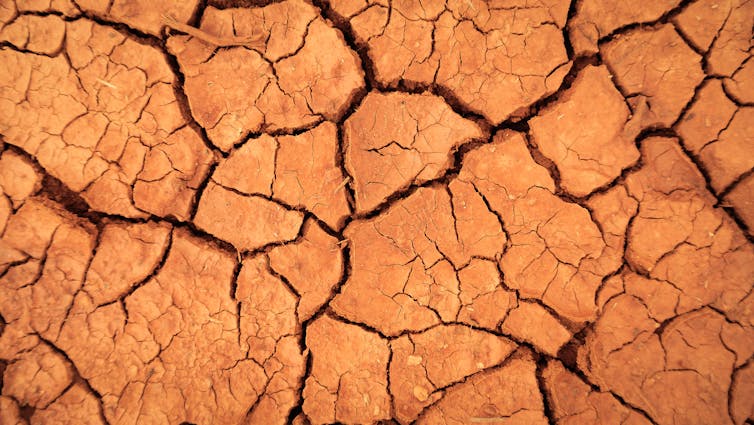
When it comes to action on climate change, Tuesday’s federal budget delivered by Treasurer Josh Frydenberg was a real – though not unexpected – disappointment which favoured polluting technologies over a clean energy future.
It included money to upgrade a coal-fired power station in New South Wales, and confirmed A$50 million previously announced to develop carbon capture and storage. The government will also spend A$52.9 million expanding Australia’s gas industry.
But investment in renewable energy was largely shunned. Notably, the government allocated just A$5 million for electric vehicles. It confirmed funding for the Australian Renewable Energy Agency (ARENA) for another decade, but the money is far less than what’s needed.
The COVID-19 pandemic has seen the Morrison government abandon long-held dogma on debt and deficits. However, the federal budget shows when it comes to climate and energy, the government is singing from the same old songbook.
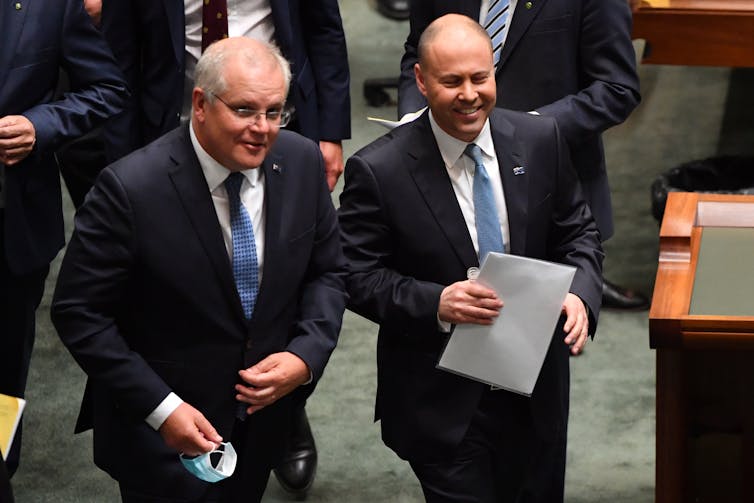
A Techno-Fix
The budget doubled down on the Morrison government’s rhetoric of “technology, not taxes”, by choosing preferred technologies for investment.
This “picking winners” approach would have some chance of addressing climate change if it were based on a comprehensive analysis of the best path to zero emissions. But instead, the government has largely made offerings at the altars of technologies worshipped by the conservative side of politics.
The government will spend an as-yet undisclosed sum, possibly A$11 million, to refurbish the Vales Point coal-fired power station. The commitment to this coal infrastructure, co-owned by prominent Liberal party donor Trevor St Baker, is a disgraceful misuse of public money. It will also do little to halt the steady decline of coal-fired power generation.
Read more: ‘The good, the bad and the ugly’: here's the lowdown on Australia’s low-emissions roadmap
As previously announced, the government will spend A$52.9 million to support the gas industry, which Frydenberg says will lower prices and support more manufacturing jobs. It includes money for gas infrastructure planning and to open up five gas basins, starting with Beetaloo Basin in the Northern Territory.
The budget confirms A$50 million for carbon capture and storage (CCS) to fund projects to cut emissions from industry. But proving the viability of large-scale CCS projects is extremely difficult, as experience in the United States and Canada has shown. In this context, allocating just A$50 million to get the technology off the ground is simply laughable.
History suggests the spending offers little return on investment. Research by the Australia Institute in 2017 revealed federal governments have spent A$1.3 billion in taxpayers’ money on CCS projects, with very little to show for it.
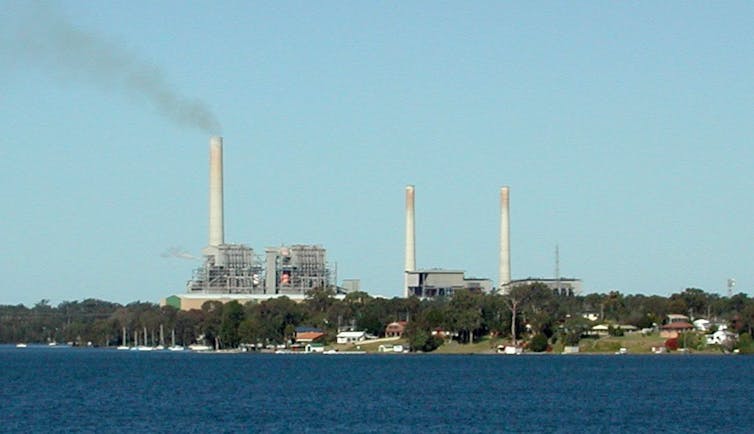
Renewables Snubbed
Meanwhile, last night’s budget largely shunned investment in renewable energy.
The budget confirmed A$1.4 billion in ARENA funding for a further ten years, including a pretty paltry A$223.9 million over the next four years. Separately, the government will also seek to pass legislation to change ARENA’s investment mandate, enabling it to fund gas and carbon capture projects.
The government has allocated a tiny A$5 million towards electric vehicle development, including money towards a manufacturing facility in South Australia. It’s good to see electric vehicles on the government’s radar. But the commitment is dwarfed by investment overseas, including a reported US$300 billion set aside by global car makers over the next decade to bring electric vehicles to mass production.
Read more: Budget 2020 at a glance: the cuts, the spends, and that big deficit in 7 charts
The measly spending on clean energy technology does not make economic sense. The renewable energy sector is standing by to slash emissions and deliver lower energy prices – if only the right policy environment existed.
The budget was also an opportunity for the government to ditch its irrational opposition to carbon pricing. Recent research has comprehensively shown carbon pricing slows growth in greenhouse gas emissions.
Vehement carbon pricing critics, such as conservatives Tony Abbott, Craig Kelly and Barnaby Joyce, are now either discredited or out of parliament altogether. And scores of countries around the world have implemented some form of price on carbon.
A Global Outlier
Most obviously, the budget was an opportunity to commit to net-zero emissions by 2050, as many developed countries have done.
The Morrison government has already used dodgy accounting tricks to meet Australia’s Paris Agreement commitment – reducing emissions by 26% on 2005 levels. The absence of a net-zero target suggests the government intends to allow emissions to grow indefinitely after 2030.
This approach is out of step with many of Australia’s international peers. Democratic presidential candidate Joe Biden, now the clear favourite to win the US election in November, is campaigning on what has been described as “the most aggressive climate platform” ever put forward by a presidential nominee.
Read more: South Korea's Green New Deal shows the world what a smart economic recovery looks like
Biden wants the US to produce net-zero emissions by 2050. His US$2 trillion plan includes huge investments in clean energy research and development, and low-emissions infrastructure such as public transport and energy-efficient buildings. He has also promised a border tax levied on imports from countries without a carbon price.
Europe is well on the way to phasing out coal, and forging ahead with new carbon-free technologies to produce steel, cement and ammonia. The European Union has also said any free trade deal with Australia is contingent on our commitment to deep emissions abatement.
And in China, President Xi Jinping recently announced his nation will reach net-zero emissions by 2060.
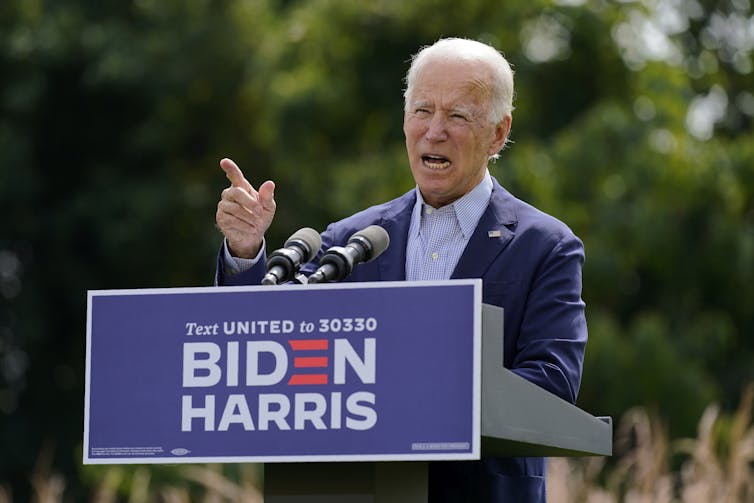
We Have No Choice
The budget was a chance to reset Australia’s failed climate policy – an opportunity enhanced by the stimulus spending brought on by COVID-19.
Instead, we got a string of backward-looking gestures including subsidies for coal, another go at the failed technology of carbon capture storage and a continued push for gas.
Sooner or later, Australia will have to join the rest of the world in ending our reliance on carbon-based energy. The catastrophic bushfires of last summer proved this. And if we refuse to move, the rest of the world will force our hand.![]()
John Quiggin, Professor, School of Economics, The University of Queensland
This article is republished from The Conversation under a Creative Commons license. Read the original article.
We estimate up to 14 million tonnes of microplastics lie on the seafloor. It's worse than we thought
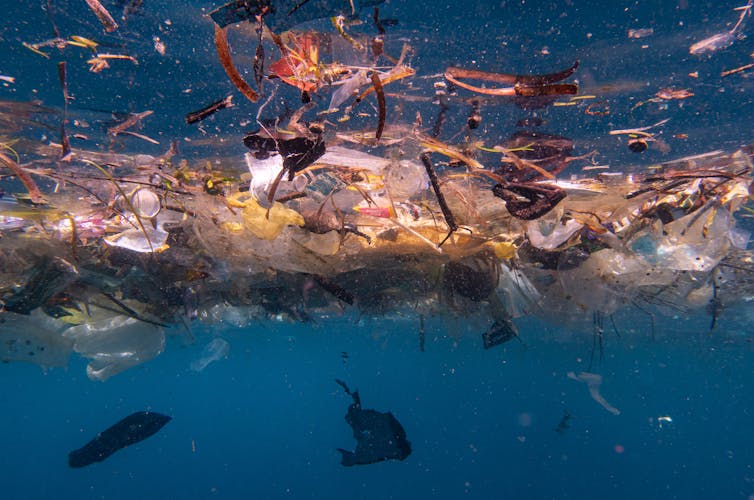
Nowhere, it seems, is immune from plastic pollution: plastic has been reported in the high Arctic oceans, in the sea ice around Antarctica and even in the world’s deepest waters of the Mariana Trench.
But just how bad is the problem? Our new research provides the first global estimate of microplastics on the seafloor — our research suggests there’s a staggering 8-14 million tonnes of it.
This is up to 35 times more than the estimated weight of plastic pollution on the ocean’s surface.
What’s more, plastic production and pollution is expected to increase in coming years, despite increased media, government and scientific attention on how plastic pollution can harm marine ecosystems, wildlife and human health.
These findings are yet another wake-up call. When the plastic we use in our daily lives reaches even the deepest oceans, it’s more urgent than ever to find ways to clean up our mess before it reaches the ocean, or to stop making so much of it in the first place.
Breaking Down Larger Plastic
Our estimate of microplastics on the seafloor is huge, but it’s still a fraction of the amount of plastic dumped into the ocean. Between 4-8 million tonnes of plastic are thought to enter the sea each and every year.
Read more: Eight million tonnes of plastic are going into the ocean each year
Most of the plastic dumped into the ocean likely ends up on the coasts, not floating around the ocean’s surface or on the seafloor. In fact, three-quarters of the rubbish found along Australia’s coastlines is plastics.
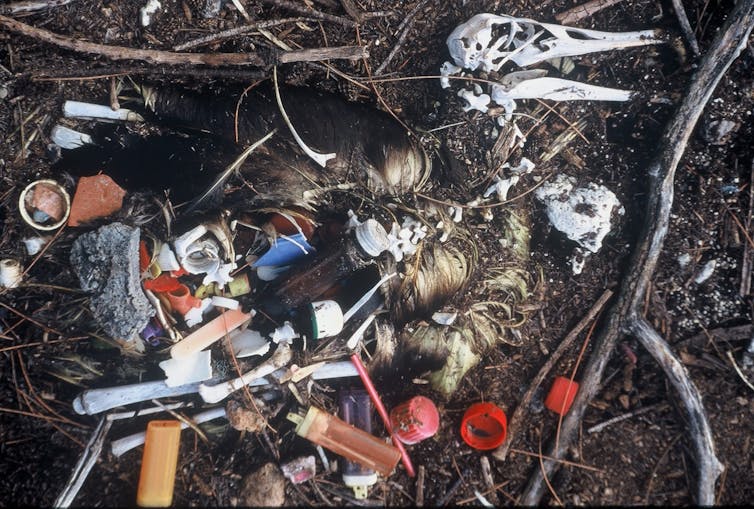
The larger pieces of plastic that stay in the ocean can deteriorate and break down from weathering and mechanical forces, such as ocean waves. Eventually, this material turns into microplastics, pieces smaller than 5 millimetres in diameter.
Their tiny size means they can be eaten by a variety of marine wildlife, from plankton to crustaceans and fish. And when microplastics enter the marine food web at low levels, it can move up the food chain as bigger species eat smaller ones.
But the problem isn’t as well documented for microplastics on the seafloor. While plastics, including microplastics, have been found in deep-sea sediments in all ocean basins across the world, samples have been small and scarce. This is where our research comes in.
Collecting Samples In The Great Australian Bight
We collected samples using a robotic submarine in a range of sea depths, from 1,655 to 3,062 metres, in the Great Australian Bight, up to 380 kilometres offshore from South Australia. The submarine scooped up 51 samples of sand and sediment from the seafloor and we analysed them in a laboratory.

We dried the sediment samples, and found between zero and 13.6 plastic particles per gram. This is up to 25 times more microplastics than previous deep-sea studies. And it’s much higher than studies in other regions, including in the Arctic and Indian Oceans.
While our study looked at one general area, we can scale up to calculate a global estimate of microplastics on the seafloor.
Using the estimated size of the entire ocean — 361,132,000 square kilometres — and the average number and size of particles in our sediment samples, we determined the total, global weight as between 8.4 and 14.4 million tonnes. This range takes into account the possible weights of individual microplastics.
How Did The Plastic Get There?
It’s important to note that since our location was remote, far from any urban population centre, this is a conservative estimate. Yet, we were surprised at just how high the microplastic loads were there.

Few studies have conclusively identified how microplastics travel to their ultimate fate.
Larger pieces of plastic that get broken down to smaller pieces can sink to the seafloor, and ocean currents and the natural movement of sediment along continental shelves can transport them widely.
But not all plastic sinks. A 2016 study suggests interaction with marine organisms is another possible transport method.
Scientists in the US have shown microbial communities, such as bacteria, can inhabit this marine “plastisphere” — a term for the ecosystems that live in plastic environments. The microbes weigh the plastic down so it no longer floats. We also know mussels and other invertebrates may colonise floating plastics, adding weight to make them sink.
Read more: Plastic pollution creates new oceanic microbe ecosystem
The type of rubbish will also determine whether it gets washed up on the beach or sinks to the seafloor.
For example, in a previous study we found cigarette butts, plastic fragments, bottlecaps and food wrappers are common on land, though rare on the seabed. Meanwhile, we found entangling items such fishing line, ropes and plastic bags are common on the seafloor.
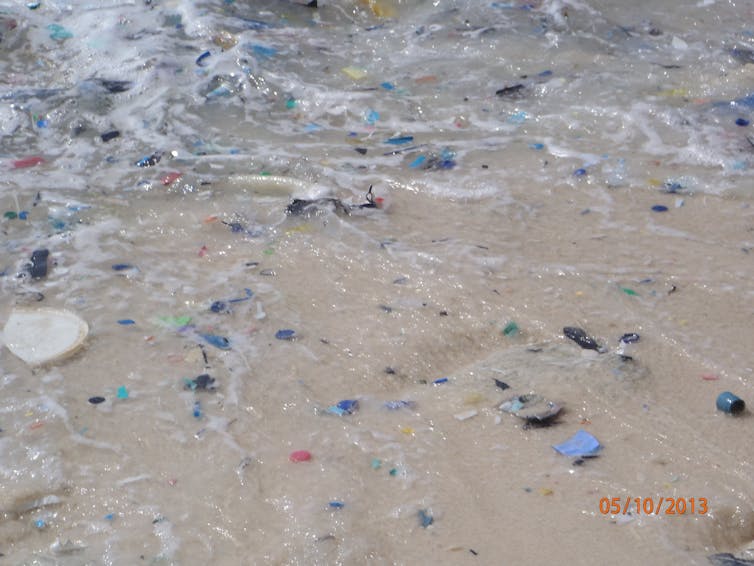
Interestingly, in our new study we also found the number of plastic fragments on the seafloor was generally higher in areas where there was floating rubbish on the ocean’s surface. This suggests surface “hotspots” may be reflected below.
It’s not clear why just yet, but it could be because of the geology and physical features of the seabed, or because local currents, winds and waves result in accumulating zones on the ocean’s surface and the seabed nearby.
Stop Using So Much Plastic
Knowing how much plastic sinks to the ocean floor is an important addition to our understanding of the plastic pollution crisis. But stemming the rising tide of plastic pollution starts with individuals, communities and governments – we all have a role to play.
Reusing, refusing and recycling are good places to start. Seek alternatives and support programs, such as Clean Up Australia Day, to stop plastic waste from entering our environment in the first place, ensuring it doesn’t then become embedded in our precious oceans.
Read more: The oceans are full of our plastic – here's what we can do about it ![]()
Britta Denise Hardesty, Principal Research Scientist, Oceans and Atmosphere Flagship, CSIRO; Chris Wilcox, Senior Principal Research Scientist, CSIRO, and Justine Barrett, Research assistant, CSIRO
This article is republished from The Conversation under a Creative Commons license. Read the original article.
How much the budget undervalued conservation: 16 World Heritage sites received less than Sydney Harbour
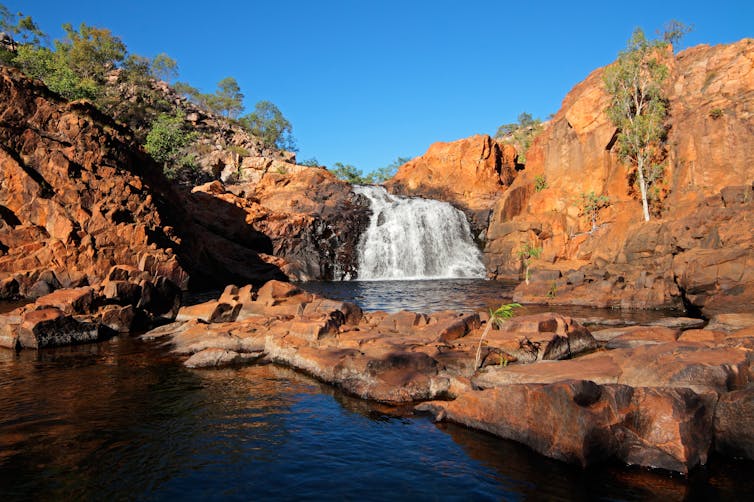
The proportion of Earth’s surface designated as “protected” has expanded over the past decade. But new findings show these areas have failed to improve the state of the environment, casting doubt on government commitments to biodiversity conservation.
Our global research published in Nature yesterday found between 2010 and 2019, protected areas expanded from covering 14.1% to 15.3% of global land and freshwater environments (excluding Antarctica), and from 2.9% to 7.5% of marine environments.
Read more: New research reveals how Australia and other nations play politics with World Heritage sites
However, 78% of known threatened species and more than half of all ecoregions on land and sea remain without adequate protection. In Australia, we found nearly half of land-based ecoregions and threatened species have inadequate protections.
“Adequate” protection is different for individual species, but typically requires 10-100% of a species’ geographic range to be under some form of protection.
The Coalition government’s federal budget allocated A$233.4 million to six Commonwealth-run national parks — but most will be spent on tourism infrastructure upgrades. What’s needed is more staff and equipment to restore, enrich and maintain natural ecosystems, and to secure our most iconic natural places.
The Best And Worst Performing Countries
Our global assessment examined how nations are tracking a decade after committing to UN targets for area-based conservation: at least 17% of land and 10% of ocean must be protected by 2020.
Best-performing countries include Botswana, Hungary and Thailand. Botswana’s protected area estate adequately covers 86% of its ecoregions and 83% of its threatened species.
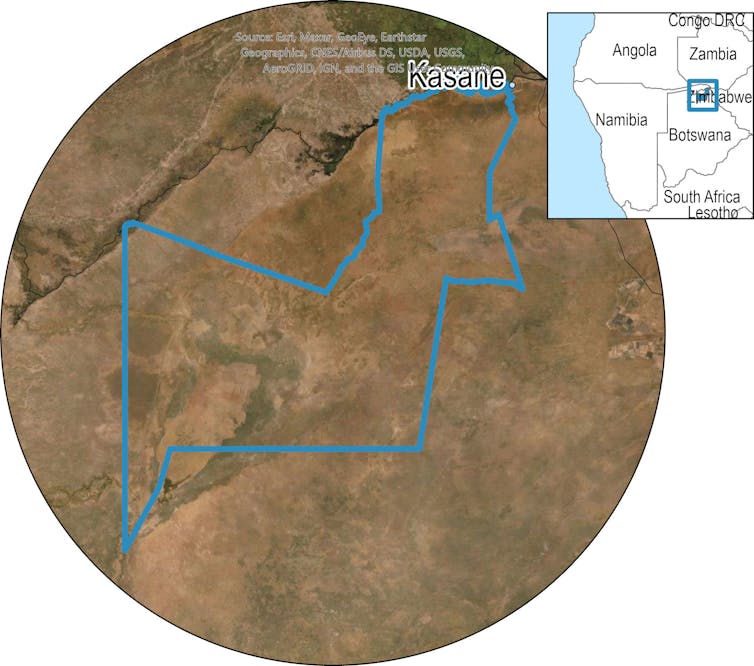
The worst performing countries — such as Indonesia, Canada and Madagascar — have a long way to go to meet these targets. For example, only 3% of Canada’s ocean waters are under formal protection.
But there are alarming and consistent problems with management. Globally, as much as 90% of marine protected areas have inadequate or below optimum on-site staff capacity. On land, some 47% of protected areas suffer from inadequate staff and budget resources. And the global budget shortfall for protected areas likely exceeds the multi-billion dollar mark.
Threatened Species In Australia
Australia’s protected area estate is not immune to these management shortfalls. Between 1997 and 2014, there were more than 1,500 legal changes in Australia that eased restrictions, reduced boundaries or eliminated legal protections in protected areas.
Our research also showed less than 1% of the geographic ranges of the orange-bellied frog (Geocrinia vitellina), carpentarian dunnart (Sminthopsis butleri) and upriver orange mangrove (Bruguiera sexangula) — all threatened species — are protected.
Many of Australia’s savanna ecoregions also have poor levels of protection, including the Mitchell grass downs (less than 3% of its range is protected), Brigalow tropical savanna (less than 5% protected) and southeast Australian temperate savannas (less than 4% protected).
But it’s not all bad news. We found around 36% of Australia’s oceans are protected and 76% of our marine ecoregions have adequate protection.
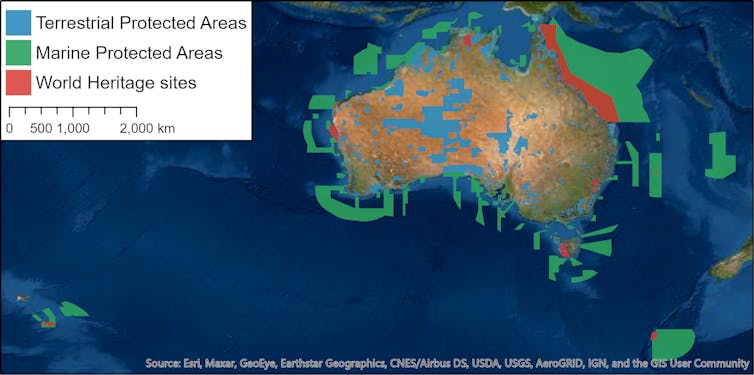
Previous studies also suggest protected areas governed by Indigenous Australians and local communities effectively reduce deforestation pressure and support similar numbers of species to those inside nationally designated protected areas.
How Should Funds Be Used?
Protecting our wild places will not come cheap. One estimate suggests an effective global land-based protected area network would cost US$76 billion annually.
This level of investment would ensure each protected area has sufficient staff, resources and equipment to conserve local species and ecosystems. The spending is justified, given the direct value generated by visits to protected areas around the world is valued at US$600 billion per year.
Read more: 'Backwards' federal budget: Morrison government never fails to disappoint on climate action
In Australia, effective conservation typically requires mimicking land and sea use practices that were in place before Europeans arrived, which involves actively managing disturbances such as fire and invasive species.
Funds should also be used to track the biodiversity outcomes of protected areas to make sure they’re meeting their objectives.
Beyond budgets, national governments around the world must be more ambitious when negotiating the next round of international environmental targets, due in mid-2021. These negotiations will define national conservation agendas for the next decade.
Governments must adopt policies that make biodiversity conservation a greater part of broader land and sea management plans. They can, for example, embrace new models for land and sea stewardship that reward good behaviour by farmers, developers and miners.
Budget Breakdown
In Australia, most national parks are funded and run by state governments. The federal government, through Parks Australia, is responsible for Kakadu, Uluru-Kata Tjuta, Christmas Island, Pulu Keeling, Booderee and Norfolk Island.
The Commonwealth also plays a key role in funding and managing Australia’s 16 natural World Heritage sites, including K'gari and the Ningaloo Coast.
Of the A$329.2 million allocated in the budget to protect iconic places, A$233.4 million (71%) is set aside for tourism infrastructure in non-World Heritage national parks in Australia.
We calculate this provides about A$18,000 for every hectare of Booderee National Park and national parks on Christmas Island, Norfork Island and Pulu Keeling. Most of this will likely be spent on improving visitor amenities or ensuring nearby businesses can stay open, rather than directed to measures such as invasive species control or fire management.
Australia’s 16 natural World Heritage sites will receive just A$33.5 million — less than the $40.6 million promised to maintain and restore historical sites across Sydney Harbour.
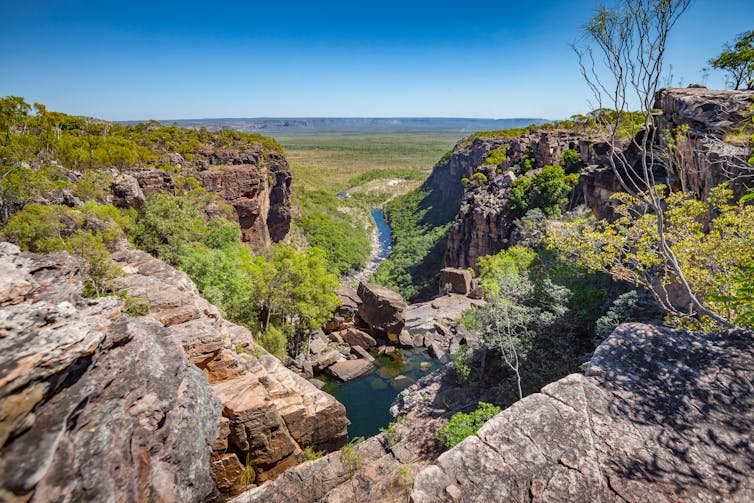
A further $23.6 million was promised for compliance, enforcement and monitoring activities across Australia’s marine parks. Enforcing no-take marine protected areas improves species populations and biomass, but this funding boost is grossly inadequate. It equates to just 1 cent for every hectare of Commonwealth-run marine parks.
It’s hard to see how these measures will prevent further ecosystem degradation or species extinctions, when conservation of Australia’s biodiversity heavily relies on protected areas.
Read more: Invasive species threaten most protected areas across the world - new study
In response to this article, a spokesperson for federal Environment Minister Sussan Ley said investment in protecting national parks went beyond infrastructure spending, however infrastructure did assist people to “access parks in a responsible manner”.
Ley’s spokesperson said protecting biodiversity was “a core aspect of park operations” and included eradicating invasive species, and interaction with the National Environmental Science Program and the office of the threatened species commissioner.
In addition to national parks, Australia “also has the world’s largest network of Indigenous protected areas, which the government is already in the process of expanding,” the spokesperson said.![]()
Sean Maxwell, Research Fellow, The University of Queensland and James Watson, Professor, The University of Queensland
This article is republished from The Conversation under a Creative Commons license. Read the original article.
Bushcare In Pittwater
Where we work Which day What time
Avalon
Angophora Reserve 3rd Sunday 8:30 - 11:30am
Avalon Dunes 1st Sunday 8:30 - 11:30am
Avalon Golf Course 2nd Wednesday 3 - 5:30pm
Careel Creek 4th Saturday 8:30 - 11:30am
Toongari Reserve 3rd Saturday 9 - 12noon (8 - 11am in summer)
Bangalley Headland 2nd Sunday 9 to 12noon
Bayview
Winnererremy Bay 4th Sunday 9 to 12noon
Bilgola
North Bilgola Beach 3rd Monday 9 - 12noon
Algona Reserve 1st Saturday 9 - 12noon
Plateau Park 1st Friday 8:30 - 11:30am
Church Point
Browns Bay Reserve 1st Tuesday 9 - 12noon
McCarrs Creek Reserve Contact Bushcare Officer To be confirmed
Clareville
Old Wharf Reserve 3rd Saturday 8 - 11am
Elanora
Kundibah Reserve 4th Sunday 8:30 - 11:30am
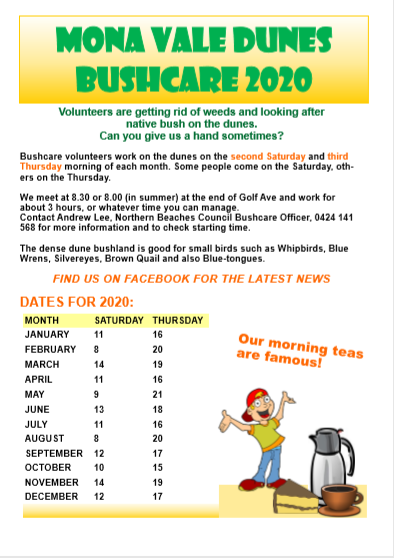 Mona Vale
Mona Vale Mona Vale Beach Basin 1st Saturday 8 - 11am
Mona Vale Dunes 2nd Saturday +3rd Thursday 8:30 - 11:30am
Newport
Bungan Beach 4th Sunday 9 - 12noon
Crescent Reserve 3rd Sunday 9 - 12noon
North Newport Beach 4th Saturday 8:30 - 11:30am
Porter Reserve 2nd Saturday 8 - 11am
North Narrabeen
Irrawong Reserve 2nd Saturday 2 - 5pm
Palm Beach
North Palm Beach Dunes 3rd Saturday 9 - 12noon
Scotland Island
Catherine Park 2nd Sunday 10 - 12:30pm
Elizabeth Park 1st Saturday 9 - 12noon
Pathilda Reserve 3rd Saturday 9 - 12noon
Warriewood
Warriewood Wetlands 1st Sunday 8:30 - 11:30am
Whale Beach
Norma Park 1st Friday 9 - 12noon
Western Foreshores
Coopers Point, Elvina Bay 2nd Sunday 10 - 1pm
Rocky Point, Elvina Bay 1st Monday 9 - 12noon
Gardens And Environment Groups And Organisations In Pittwater
Tick Population Booming In Our Area
Residents from Terrey Hills and Belrose to Narrabeen and Palm Beach report a high number of ticks are still present in the landscape. Local Veterinarians are stating there has not been the usual break from ticks so far and each day they’re still getting cases, especially in treating family dogs.
To help protect yourself and your family, you should:
- Use a chemical repellent with DEET, permethrin or picaridin.
- Wear light-colored protective clothing.
- Tuck pant legs into socks.
- Avoid tick-infested areas.
- Check yourself, your children, and your pets daily for ticks and carefully remove any ticks using a freezing agent.
- If you have a reaction, contact your GP for advice.
 New Shorebird Identification Booklet
New Shorebird Identification Booklet
The Migratory Shorebird Program has just released the third edition of its hugely popular Shorebird Identification Booklet. The team has thoroughly revised and updated this pocket-sized companion for all shorebird counters and interested birders, with lots of useful information on our most common shorebirds, key identification features, sighting distribution maps and short articles on some of BirdLife’s shorebird activities.
The booklet can be downloaded here in PDF file format: http://www.birdlife.org.au/documents/Shorebird_ID_Booklet_V3.pdf
Paper copies can be ordered as well, see http://www.birdlife.org.au/projects/shorebirds-2020/counter-resources for details.
Download BirdLife Australia's children’s education kit to help them learn more about our wading birdlife
Shorebirds are a group of wading birds that can be found feeding on swamps, tidal mudflats, estuaries, beaches and open country. For many people, shorebirds are just those brown birds feeding a long way out on the mud but they are actually a remarkably diverse collection of birds including stilts, sandpipers, snipe, curlews, godwits, plovers and oystercatchers. Each species is superbly adapted to suit its preferred habitat. The Red-necked Stint is as small as a sparrow, with relatively short legs and bill that it pecks food from the surface of the mud with, whereas the Eastern Curlew is over two feet long with a exceptionally long legs and a massively curved beak that it thrusts deep down into the mud to pull out crabs, worms and other creatures hidden below the surface.
Some shorebirds are fairly drab in plumage, especially when they are visiting Australia in their non-breeding season, but when they migrate to their Arctic nesting grounds, they develop a vibrant flush of bright colours to attract a mate. We have 37 types of shorebirds that annually migrate to Australia on some of the most lengthy and arduous journeys in the animal kingdom, but there are also 18 shorebirds that call Australia home all year round.
What all our shorebirds have in common—be they large or small, seasoned traveller or homebody, brightly coloured or in muted tones—is that each species needs adequate safe areas where they can successfully feed and breed.
The National Shorebird Monitoring Program is managed and supported by BirdLife Australia.
This project is supported by Glenelg Hopkins Catchment Management Authority and Hunter Local Land Services through funding from the Australian Government’s National Landcare Program. Funding from Helen Macpherson Smith Trust and Port Phillip Bay Fund is acknowledged.
The National Shorebird Monitoring Program is made possible with the help of over 1,600 volunteers working in coastal and inland habitats all over Australia.
The National Shorebird Monitoring program (started as the Shorebirds 2020 project initiated to re-invigorate monitoring around Australia) is raising awareness of how incredible shorebirds are, and actively engaging the community to participate in gathering information needed to conserve shorebirds.
In the short term, the destruction of tidal ecosystems will need to be stopped, and our program is designed to strengthen the case for protecting these important habitats.
In the long term, there will be a need to mitigate against the likely effects of climate change on a species that travels across the entire range of latitudes where impacts are likely.
The identification and protection of critical areas for shorebirds will need to continue in order to guard against the potential threats associated with habitats in close proximity to nearly half the human population.
Here in Australia, the place where these birds grow up and spend most of their lives, continued monitoring is necessary to inform the best management practice to maintain shorebird populations.
BirdLife Australia believe that we can help secure a brighter future for these remarkable birds by educating stakeholders, gathering information on how and why shorebird populations are changing, and working to grow the community of people who care about shorebirds.
To find out more visit: http://www.birdlife.org.au/projects/shorebirds-2020/shorebirds-2020-program
Pittwater Reserves
Aussie Bread Tags Collection Points

Spring School Holidays Bush Walk
During the school holidays I took my nieces on a few walks and let them use my camera to take a few photos - they enjoyed this so much, much much better than taking photos with their phones, that they are going to keep doing this and I even found some cameras they can use underwater, because they like going in the water, which they will be able to use there too.
When I came home to Pittwater I looked up what the plants we saw along the way were so they too would know what they are called. As some of these can also be seen growing in the bush around us here, I share three of their flower photos and what was found out about them.
This is a purple pea or ‘Happy wanderer’ (Hardenbergia violacea):
The Hardenbergia Happy Wanderer is a fast growing climber that produces leathery, dark green leaves and masses of purple, pea like flowers from winter to spring. It also attracts native butterflies, bees and birds. Hardenbergia violacea is a species of flowering plant in the pea family Fabaceae, native to Australia from Queensland to Tasmania. It is known in Australia by the common names ‘false sarsaparilla’, ‘purple coral pea’, ‘happy wanderer’, ‘native lilac’ and ‘waraburra’. The seeds are naturally dispersed by ants.
Hardenbergia violacea, as ‘false sarsaparilla’, has been used by indigenous Australians as a drink and a medicine for thousands of years. 'Leaves and stems provide a cure-all and a general tonic reputed to relieve colds, flu, coughs, bronchitis, arthritis, rheumatism, stomach aches and diabetes. The new leaves can be sucked to ease a sore throat'; use with horehound for 'good blood medicine' (Wreck Bay Community & Renwick, 2000:37).
The leaves were also used as tea substitute in the early days of New South Wales settlement by people emigrating here.
The term ‘Hardenbergia’ means this plant was named after Franziska Countess von Hardenberg, a 19th century Austrian noblewoman, patron of botany and a sister of Baron von Hügel, who collected plants in Western Australia in 1833. The word ‘Violacea’ is from Latin meaning ‘violet colour’, and referring to the typical colour of the flower.
This purple-pink (lilac) flower is called ‘Indigofera australis’, the Australian indigo or Austral indigo, (family Fabaceae), and it is an attractive species of leguminous shrub in the genus Indigofera.
Indigofera australis:
The genus name Indigofera is Neo-Latin for "bearing Indigo". Australis, from the Latin, means not “Australian” but "southern", referring to the geographical distribution of the species. This is a lovely ornamental shrub which is also a good plant for wildlife, being a good nectar and food source for butterflies, birds and other animals. Australian indigenous peoples crushed the leaves and added these to water to kill or stun fish and eels – a quick way to slow down fast fish if you want to eat these for dinner!
The yellow bush pea with the spiky leaves we saw is called ‘Dillwynia sericea’ – ‘Showy Parrot Pea’:
This flower is a native of Queensland, New South Wales and Victoria, and prefers light soils in an open, sunny or shady position and is drought and frost resistant. An evergreen shrub to 1 metre in height with stiff hairy stems, 2cm needle-like leaves and bright yellow pea flowers, streaked with red, it flowers in Spring and Summer.
Remember how I said there were lots of yellow bush peas in Australia? – in fact there are more than 1500 pea-flowered species, encompassing a diversity of life-forms from herbs and shrubs to vines and trees. Peas can be found in virtually every habitat!
Pretty cool!!
Ok: let’s find out about three of the birds we saw!
These are Australian Wood Ducks:
The Australian wood duck, maned duck or maned goose is a dabbling duck found throughout much of Australia. It is the only living species in the genus Chenonetta. The Australian Wood Duck is a medium-sized 'goose-like' duck with a dark brown head and a pale grey body with two black stripes along the back. Males have the darker head and a small dark mane, with a speckled brown-grey breast and a black lower belly and undertail.
The two we saw were a pair that may go on to have ducklings! This is a Wood Duck family I photographed at Newport, in Crystal Bay, in the Spring of 2012:
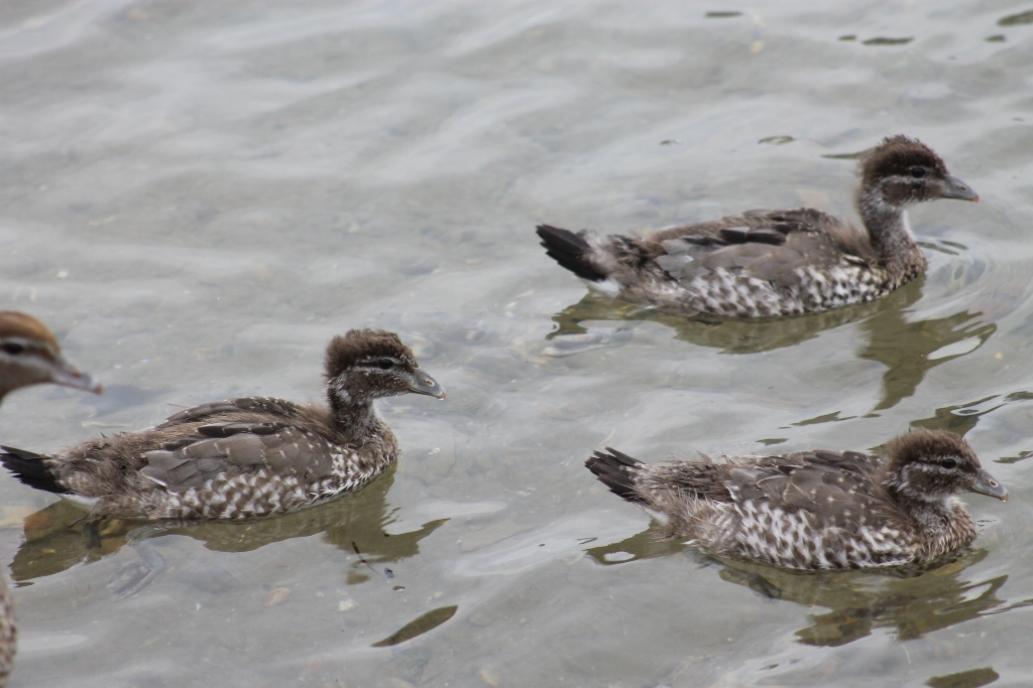
Ducklings.
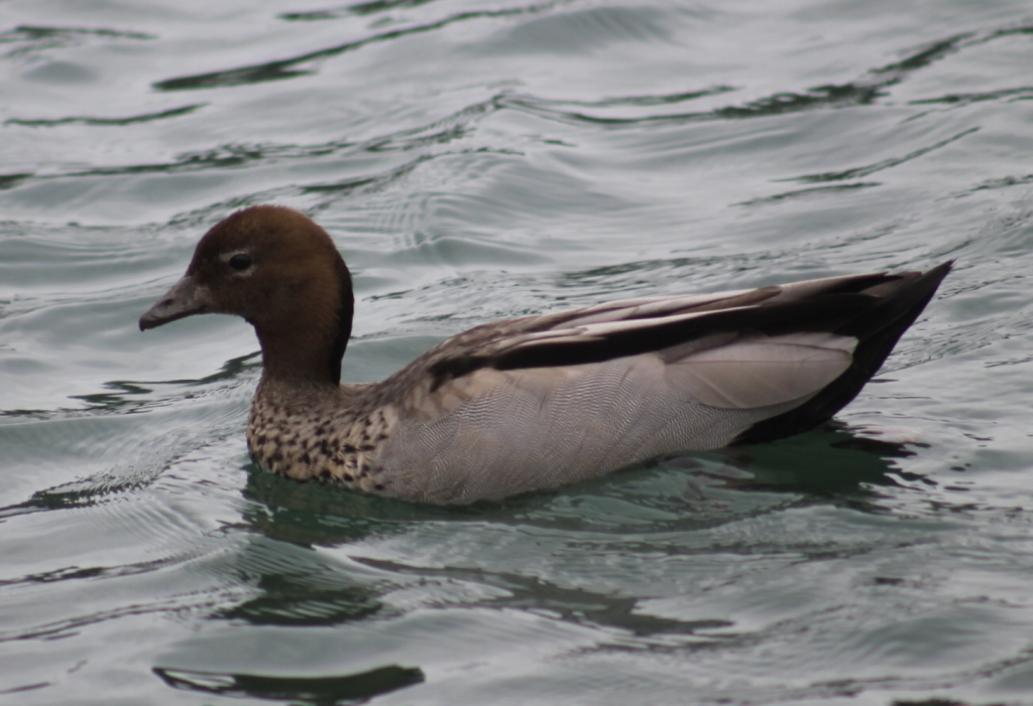
Australian Wood Duck - Male.
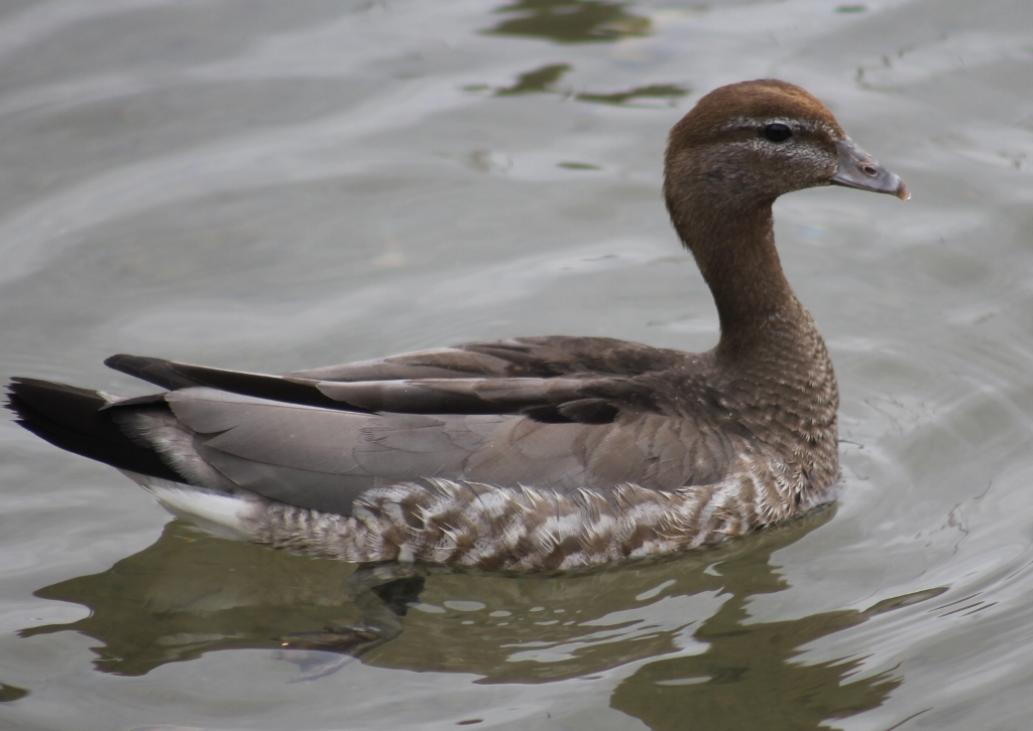
Australian Wood Duck - Female.
This is an Australian Miner bird having a look at a nest in one of the gum trees outside of grandma’s house – I took this photo after you two went home one day – just to show you what a birds’ nest looks like. This one is formed from mud and wrapped around the tree branches – it probably is the nest for a small wren bird, like the fairy wren – they build these kinds of mud-nests – which means the Miner bird is just being a sticky-beak! No pun intended:
This birds’ nest is made from twigs nestled into the tree branches though – see the difference?
I also heard two different kinds of owls, and saw one at dawn one morning, and heard the lovely little chirrups of bats – owls and bats like to nest in hollow trees; so their nests can be harder to see – you need to listen for them calling to know where they may live.
Ok – a third bird – this one we were trying to get a photo of and could see flying fast past us, and hear calling from the upper canopy of the trees, is an Eastern Rosella, (Platycercus eximius) which is native to southeast of the Australian continent and to Tasmania. As we had some trouble trying to get that one on our first walk I sat outside after and waited for them to turn up again so I could get this photo for my nieces:
Eastern Rosellas are medium-sized colourful parrots with distinctive white cheek patches. It has a red head, neck and breast, with yellowish to greenish upper parts, a yellow underbody and a yellow-green to blue-green rump, with a red undertail. The shoulders are bright blue.
The Rosella is named in Indigenous dreamtime legends as among the first of birds to have sung here, and signifies true love or lifelong commitment in the Jenolan Caves region and is called ‘Bur-oo-lit’ in the Kutthung, or Kattang, dialect of Australian Aborigines living along the southern bank of the Karuah river and the south shore of Port Stephens, New South Wales. The name ‘rosella’ stems from early settler’s naming of a bird common to the Rose Hill area of Sydney.
We also saw a blue-tongued goanna - it was hiding in amongst the plants of the garden when we got back - you can just see him or her here among the leaves: Isn't it amazing what you can find to see when you just walk around listening and looking closely?
COVID-19 Report Identifies Immediate Areas For Action
- First, the Australian Government should fund providers to ensure there are adequate staff available to deal with external visitors to enable a greater number of more meaningful visits between people receiving care and their loved ones.
- Second, the Australian Government should create Medicare Benefits Schedule items to increase the provision of allied health and mental health services to people living in residential aged care during the pandemic to prevent deterioration in their physical and mental health.
- Third, the Australian Government should publish a national aged care plan for COVID-19 and establish a national aged care advisory body.
- Finally, the Australian Government should require providers to appoint infection control officers and should arrange for the deployment of accredited infection prevention and control experts into residential aged care homes.
Recommendations
- establish a national aged care advisory body
- establish protocols between the Australian Government and the States and Territories based on the NSW Protocol but having regard to jurisdictional differences
- maximise the ability for people living in aged care homes to have visitors and to maintain their links with family, friends and the community
- establish a mechanism for consultation with the aged care sector about use of Hospital in the Home programs in residential aged care
- establish protocols on who will decide about transfers to hospital of COVID-19 positive residents, having regard to the protocol proposed by Aged and Community Services Australia
- ensure that significant outbreaks in facilities are investigated by an independent expert to identify lessons that can be learnt. The results of any such investigations should be promptly disseminated to the sector.
A Stronger Aged Care System With A Focus On Quality Care
- Dementia training and support ($11.3m)
- Implementation of the aged care workforce strategy ($10.3m)
- Keeping young people out of residential aged care ($10.6m)
- Preparatory work for a new funding model to support better care ($91.6m)
- Support for the Royal Commission ($4.1m)
- Support through the Business Improvement Fund ($35.6m)
- Commonwealth Disability Support for Older Australians ($125.3m)
- Investment in the Serious Incident Response Scheme ($29.8m); and
- Developing the single in home support program for older people at home ($4.6m).
Singing Together While Apart - The Silver Swan
Budget - Missed Opportunity For Older Australians
Budget Delivers Some Good News For Older Australians, But Other Things Are Missing
- $29.8 million to implement the Serious Incident Response Scheme to provide better protection for residents in aged care;
- $91.6 million over four years to create an independent assessment service for the new residential care assessment and funding tool;
- $35.6 million over two years to extend the Business Improvement Fund, to help restructure residential aged care; and
- Commitments to upskilling aged care workers in dementia and funding the Aged Care Workforce Industry Council, which now needs to deliver leadership in workforce reform.
Curious Kids: what happens if you breathe pure oxygen?

What happens if you breathe pure oxygen and why? Stephen, age 9, Muntinlupa City, The Philippines
Hi Stephen!
That’s a great question. We can’t live without oxygen. But too much can harm us. Let’s find out why.
Our bodies make the energy we need to run around, play and do schoolwork, by burning the food we eat. Think of this a bit like a candle burning. To burn our food, we need oxygen, which we get from breathing in the air around us.
Oxygen isn’t the only gas in the air. In fact, air’s mostly made of nitrogen. This has a very important job. Nitrogen slows down the burning process so you get enough energy through the day, bit by bit.
If you breathed pure oxygen, the energy from your food would be released all at once. So forget candles. This is more like a firework exploding. Bang! If you breathed pure oxygen, you wouldn’t actually explode. But you would damage your body.
Read more: Curious Kids: when I swipe a matchstick how does it make fire?
Breathing pure oxygen sets off a series of runaway chemical reactions. That’s when some of that oxygen turns into its dangerous, unstable cousin called a “radical”. Oxygen radicals harm the fats, protein and DNA in your body. This damages your eyes so you can’t see properly, and your lungs, so you can’t breathe normally.
So breathing pure oxygen is quite dangerous.
But breathing pure oxygen can sometimes be necessary. Astronauts and deep-sea scuba divers sometimes breathe pure oxygen because they work in very dangerous places.
The length of time they breathe pure oxygen, and how much they breathe, is carefully controlled so they’re not harmed.
Sick people, including premature babies in hospital or people in hospital with the coronavirus, might also need some extra help breathing. They might be given a bit of extra oxygen on top of what’s in the air. It acts like a medicine to help calm and settle their breathing.
Again, too much oxygen can be dangerous. That’s why doctors and nurses keep a close eye to make sure people get just the right amount they need.
So we need oxygen to help us get energy from our food. We might also need a little extra if we’re sick in hospital, or if we’re an astronaut or deep-sea diver. But too much oxygen can harm us.
Hello, Curious Kids! Do you have a question you’d like an expert to answer? Ask an adult to send your question to curiouskids@theconversation.edu.au![]()
Mark Lynch, Lecturer in Chemistry, University of Southern Queensland
This article is republished from The Conversation under a Creative Commons license. Read the original article.
Curious Kids: what are cells made out of?
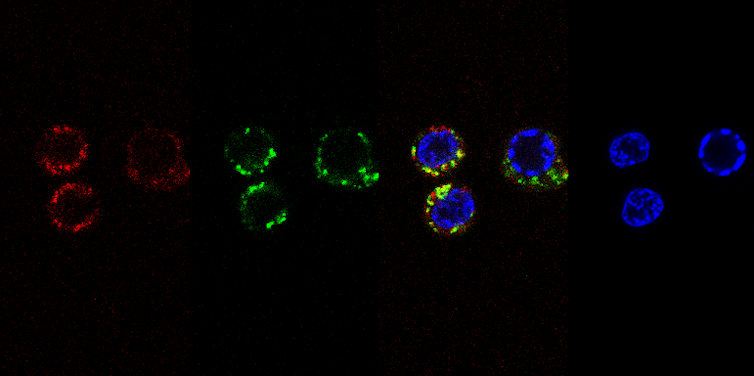
I know veins are made out of cells but what are cells made out of? It’s very tricky to answer that — Bea, 4 years old
That is a great question, Bea!
The human body is just like a big puzzle, but with billions of tiny pieces called cells. Our cells come in many different shapes and sizes. Together, they make up all of the parts of our body, from our veins to our brain.
Our cells are really, really small. For example, look at how thin a single strand of your hair is. Although it’s so thin, nearly 20 cells could fit across it. That’s how small they are.
Scientists have discovered cells are made from different building blocks we call molecules, such as water, plus other types like proteins, fats and DNA.
Just like our body, which has different parts that all work together, our cells also have different parts too. Let’s take a closer look.
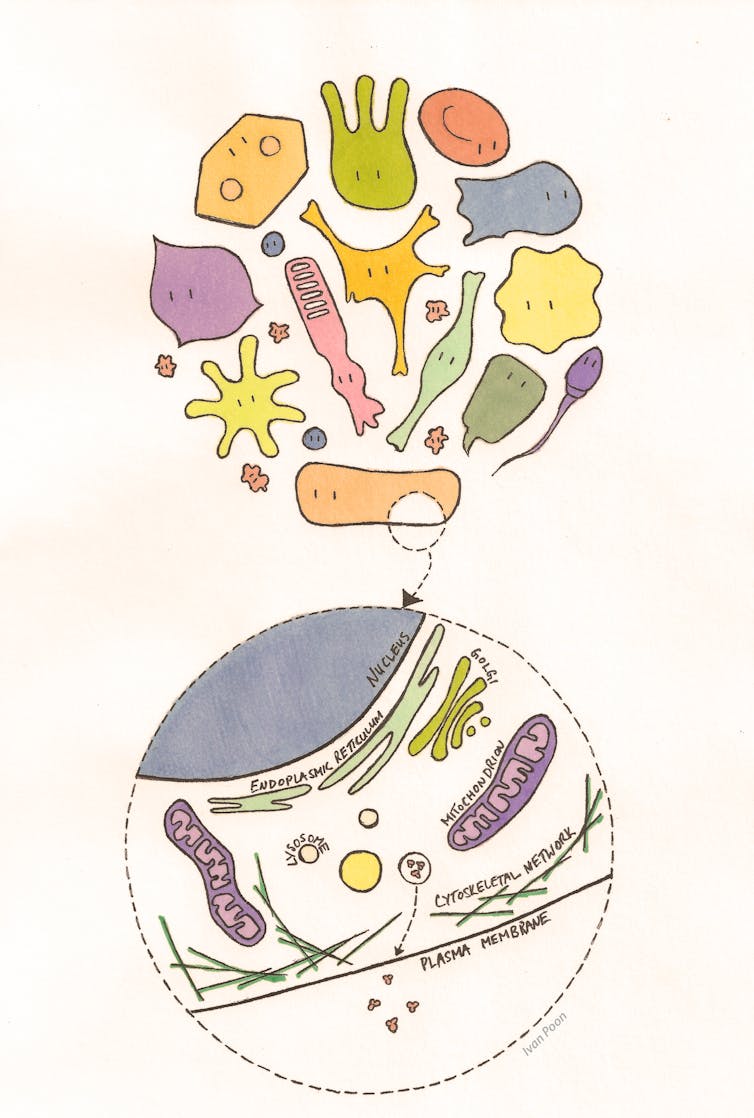
Cells Have Skin
The outside skin of a cell is called the plasma membrane. It is made mainly of molecules called fats. This skin forms a bubble around the outside of the whole cell and holds it together.
Plants also have cells. But plant cells have an extra layer of skin called the cell wall which is strong and tough, not soft like a bubble, which explains why plants like trees can grow so tall.
Cells Have Skeletons
Like the bones inside our body, cells also have a kind of skeleton called the cytoskeleton (which means “cell skeleton”). It is made from molecules called proteins. The cell’s skeleton makes it strong, and also helps our cells move around the body.
Cells Have Brains (Sort Of)
One of the most important molecules in a cell is its DNA, made from a type of building block called nucleotides. DNA is like an instruction book for everything our cells have to do (including making more cells, moving, and fighting germs). As the nucleus stores most of our DNA, it’s just like the brain of the cell.
You might have heard of genes (not the ones you wear, but the ones inside you). They are just like a recipe your cells use to make you! They decide how tall you will grow, what colour your eyes or hair are, and more.
Our genes are made of DNA and we get this DNA from our mum and dad. For example, if a dad has brown eyes, he can pass on the recipe in his DNA to his child which tells their cells how to make brown eyes. This explains why we can look similar to our parents.

Cells Have Stomachs
When you’re hungry, you eat! Your stomach then breaks down your food, in a process called digestion. Just like this, your cells also have their own mini stomachs which are important to digest the food and waste from the cell and keep them happy.
Cells Make Energy
If you turn on a light switch, the room quickly lights up. This is because of electricity which is a type of energy, made in big powerhouses. We use electricity for so many things like lights but also TVs, phones, heating and cooling.
Nearly everything that happens inside a cell needs energy too. Therefore, cells have special sections in them called mitochondria, which are the powerhouses of the cell and make all the energy the cell needs to work.
Cells Can Talk To Each Other!
If our cells are so tiny and our body is so big, how can all of our cells work together? The answer is they can talk … well, kind of.
Instead of picking up the phone to talk to each other, our cells have to send messages. These messages are made of molecules that help cells communicate.
Here is a cool example. If you get stung by a bee (ouch!) your skin will start to go red and puffy. This may look scary but actually, it is your body helping you. The cells in this area are quickly sending out messages for help. Cells in other areas get these messages and then go in for the rescue.
As scientists, we know a lot about cells. But we still don’t know everything. That’s why we need young kids to stay curious and ask questions, like Bea!
Hello, curious kids! Have you got a question you’d like an expert to answer? Ask an adult to send your question to curiouskids@theconversation.edu.au![]()
Georgia Atkin-Smith, Research scientist, La Trobe University and Ivan Poon, Associate Professor, Biochemistry, La Trobe University
This article is republished from The Conversation under a Creative Commons license. Read the original article.
Waves Of Wellness
Waves of Wellness offer free weekly learn-to-surf lessons that are paired with wellness discussions on the beach. It's for men aged 16+ and is launching again in Warriewood later this month (October 30, 2020). Many people have greatly benefited from this program, so if you know of anyone who could gain from it, get them to register here: https://www.wowsandnsurf.com/
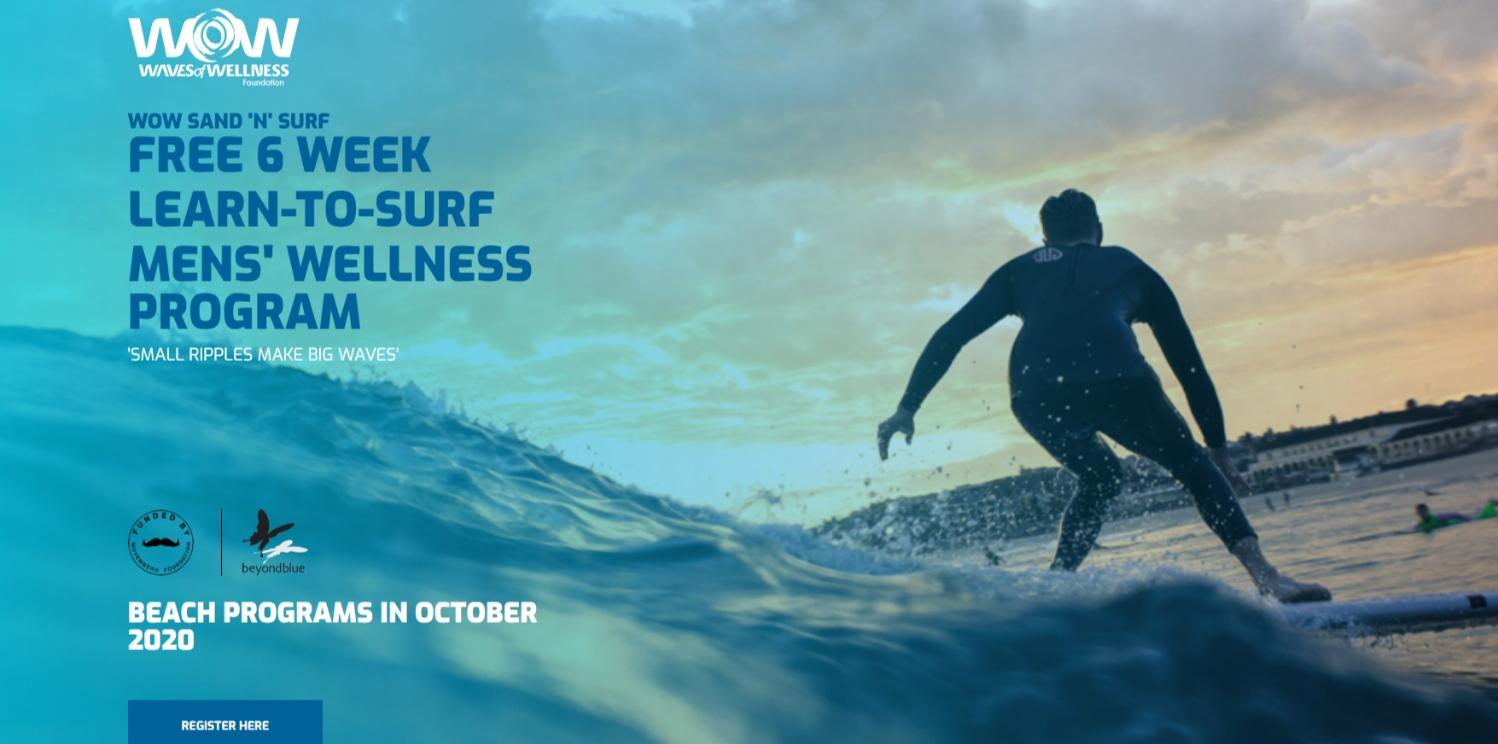
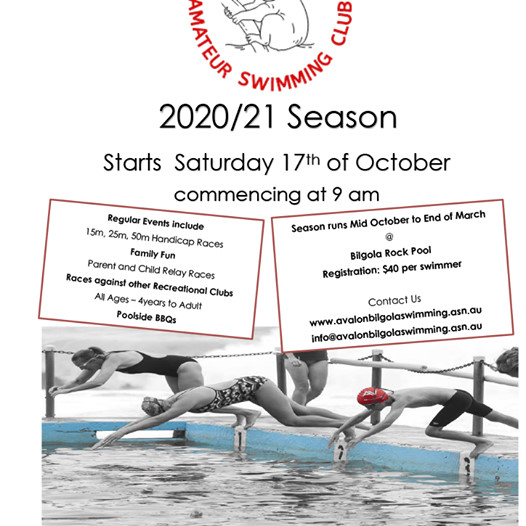
Avalon Bilgola Amateur Swimming Club 2020/2021 Season
Aussie Back Yard Bird Count 2020
How to get involved
The Aussie Bird Count is a great way to connect with the birds in your backyard no matter where your backyard happens to be — a suburban backyard, a local park, a patch of forest, down by the beach, or the main street of town.
You can count as many times as you like over the week, we just ask that each count is completed over a 20-minute period. The data collected assists BirdLife Australia in understanding more about the birds that live where people live.
Register here: https://aussiebirdcount.org.au

Snowball Fight From 124 Years Ago
Joining The Two Halves Of The Sydney Harbour Bridge
Video by NSW State Archives
On August 19, 1930 at 10pm the two halves of the Sydney Harbour Bridge were joined. The two half arches were fabricated from steel in workshops before being loaded onto barges and towed into position. The arches were then lifted up by two 580 tonne electrically operated creeper cranes. The arch spans 503m and the summit is 134m above sea level. Steel decking was then hung from the arches over the next nine months.
The bridge was officially opened on March 19, 1932.
These images are from our collection:
* NRS-12685 - Sydney Harbour Bridge Photographic Albums http://ow.ly/ycOD50BDNXg
Forest High Students In A League Of Their Own
October 9, 2020
An idea to take lunchtime football beyond the school oval has paid off for Year 12 students at The Forest High School.
Securing a state-of-the-art stadium to play a game of lunchtime football is no easy feat, but that’s exactly what Jude Dolan and his peers at The Forest High School did for the final decider in The Wednesday League.
The grassroots football tournament, made popular by broadcasting its matches online with expert commentary featuring Simon Hill, Derek Rae and Peter Drury, played its final match at Bankwest Stadium in Parramatta.
“Playing the final game at the stadium had been a true goal of mine since the league’s inception, and it was thanks to the ultimate aid of Bankwest as major sponsors themselves that I was able to take The Wednesday League to this new height,” Jude wrote in an article for Student Voices.
“I found success by channelling my ambition and giving each of my wildest imaginations a try. I had optimistic partnership ambitions. I contacted Peter Drury and Derek Rae for commentary and reached an agreement with Rebel Sport.”
The students had big dreams when they came up with the idea of the league and learnt a lot of new skills as they prepared for game day at the western Sydney stadium.
“Weeks of preparation went into the big match day. After confirming the stadium as host in early September, we worked on the operational side of things, the media, and everything else I needed to learn and do ahead of such an arena event,” Jude said.
“A few sleepless nights and many free periods got the day over the line in the end and I am proud to have organised such a day.”
And Jude is now looking ahead to see how The Wednesday League can continue and expand in the future.
“I cannot wait to take The Wednesday League into its next chapter and beyond. The thought of growing my idea as far as it possibly can excites me day in, day out.”
The full game with expert commentary from Simon Hill streams online tonight from 7pm. Find out more on The Wednesday League Facebook page
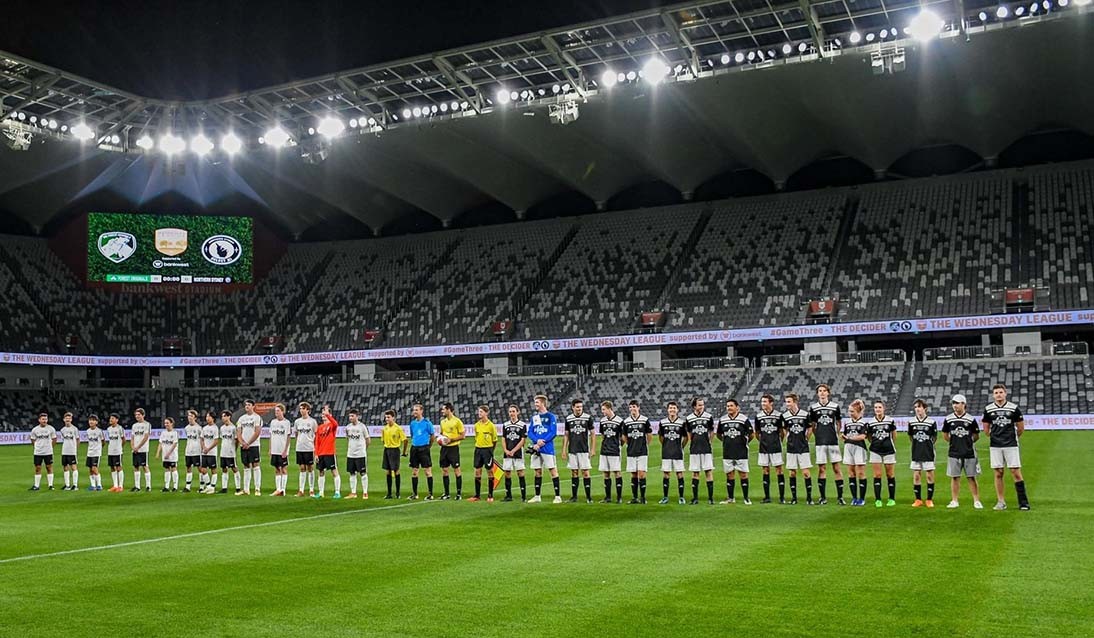
Bankwest Stadium hosted the decider in The Wednesday League.
Balgowlah Boys Campus: Building The Scaffold For Success
October 6, 2020
Explicit teaching has led to a significant and sustained lift in student outcomes at Balgowlah Boys Campus. Students from Balgowlah Boys Campus share their journey of learning improvement with NSW Department of Education Secretary Mark Scott.
Explicit teaching has been the “core” strategy that has underpinned more than a decade of sustained improvement from “a full range of students” at Northern Beaches Secondary College Balgowlah Boys campus.
Principal Paul Sheather and Deputy Principal Ben Seldon spoke with Secretary Mark Scott on the CESE What works best podcast about the school’s approach to explicit teaching, particularly in the area of English.
The school has gained attention over the past decade for its excellent academic results, most notably in English.
“We noticed quite a few years ago coming back after HSC marking, that the boys were lacking the specific language that was required to achieve high outcomes in the HSC,” Mr Seldon said.
Teachers map out learning outcomes and collaboratively work to develop explicit models to help students understand what is expected in their learning.
“As classroom teachers we need to be very specific, like maths teachers, very explicit in talking through how you put sentences together,” Mr Seldon explained.
Teachers create a simple sentence scaffold that allows students to create very complex sentence structures and develop and replicate that writing skill over several years of learning, helping keep students engaged.
The strategy has proven successful with Balgowlah Boys High sitting within the top 10 for Band 6 results in HSC English over the past four years.
Mr Scott said Balgowlah Boys had “a remarkable and sustained life in educational outcomes over the past decade or 15 years”.
"It wasn’t just a sugar-hit effect where you had a good year or two; you lifted it and you’ve sustained it over time,” he noted.
Mr Sheather said that reflected the school’s decision to introduce explicit teaching practices beyond the English faculty with teachers across the school delivering a consistent process in all classrooms.
“Teachers in all faculties are now working in collaborative groups to hone their skills in being able to develop the best possible model, and their skillset enables them to deconstruct and deliver it in the classroom,” Mr Sheather said.
“That’s enabled us to ensure that with a growing school, the new and less experienced teachers across the school gain this skillset and ability to model in their faculty area.”
Hear more about Balgowlah Boys Campus approach to explicit teaching and listen to students speak about their success in learning on the What works best podcast.
Resources are available online for teachers to explore the What works best themes in more detail.
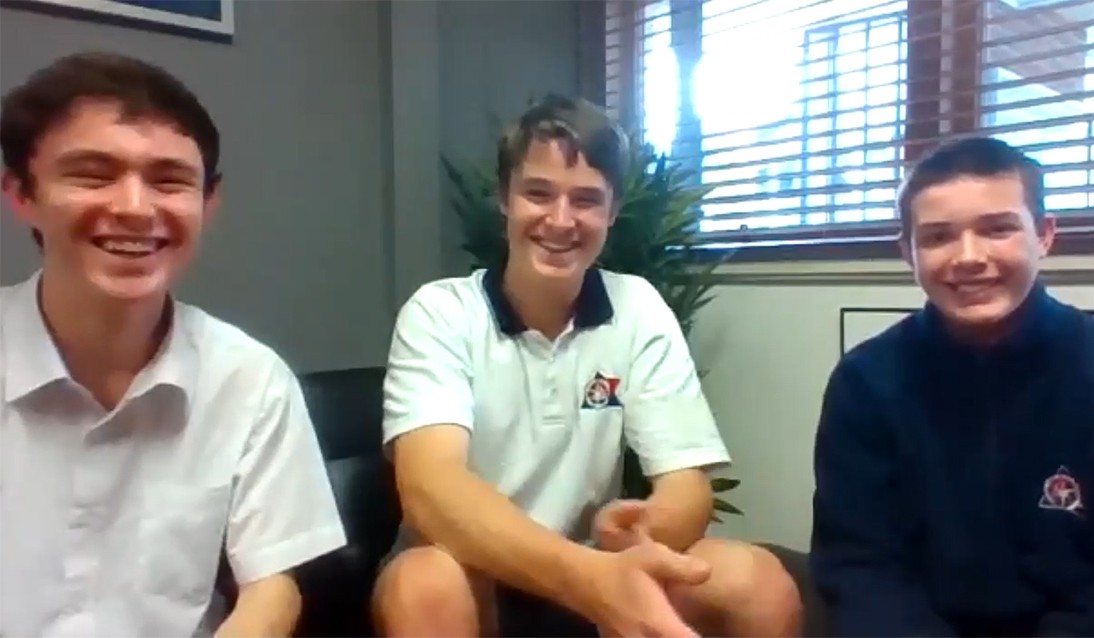
Triplets Try To Transform The World
October 8, 2020
Three sisters dreaming of making a difference have created a platform for young people to share their stories.
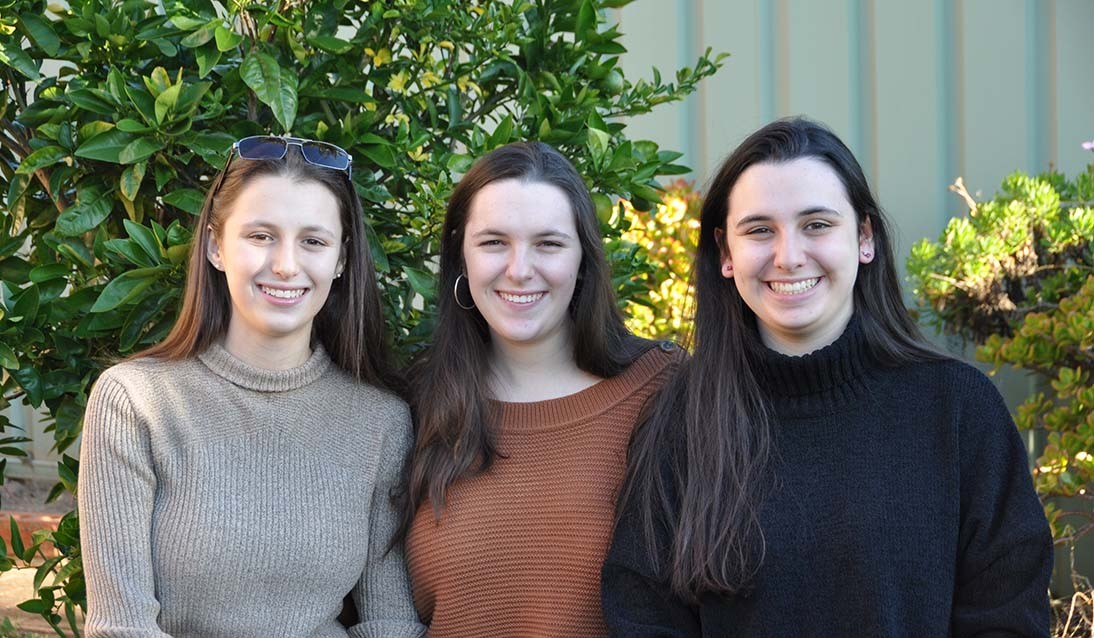
Making a difference: Marina, Luiza and Juliana.
Triplet sisters Luiza, Marina and Juliana Knijnik have a vision for their generation to change the world.
The Caringbah High School students created an online magazine, Woke!, after winning a grant from their local council.
The magazine focuses on social justice issues and invites students to write articles on topics that matter to them. The sisters who are about to enter Year 12 have shared their story on Student Voices.
“Since launching we have heard from young people from all walks of life and cultures, about their hopes, fears, passions and world issues,” they said.
“We have been fortunate enough to interview some amazing young people from Australia and across the globe who are changing their communities, countries and even the world.”
The online magazine has published 65 articles to more than 12,000 readers.
But it hasn’t been without its challenges balancing study, sport and social life with the work required to run an online platform.
And sometimes the teenagers feel like some adults aren’t taking them seriously.
“There are so many times when we have been met with scorn, disbelief and unwillingness to help.”
Yet the trio are not deterred as they believe in the power of sharing stories to ignite change in society.
“We want to be the spark that can set the world aflame. Because one person can make a difference, you can make a difference. One voice can start a ripple effect.”
Sports Coach Defies Fashion Stereotypes
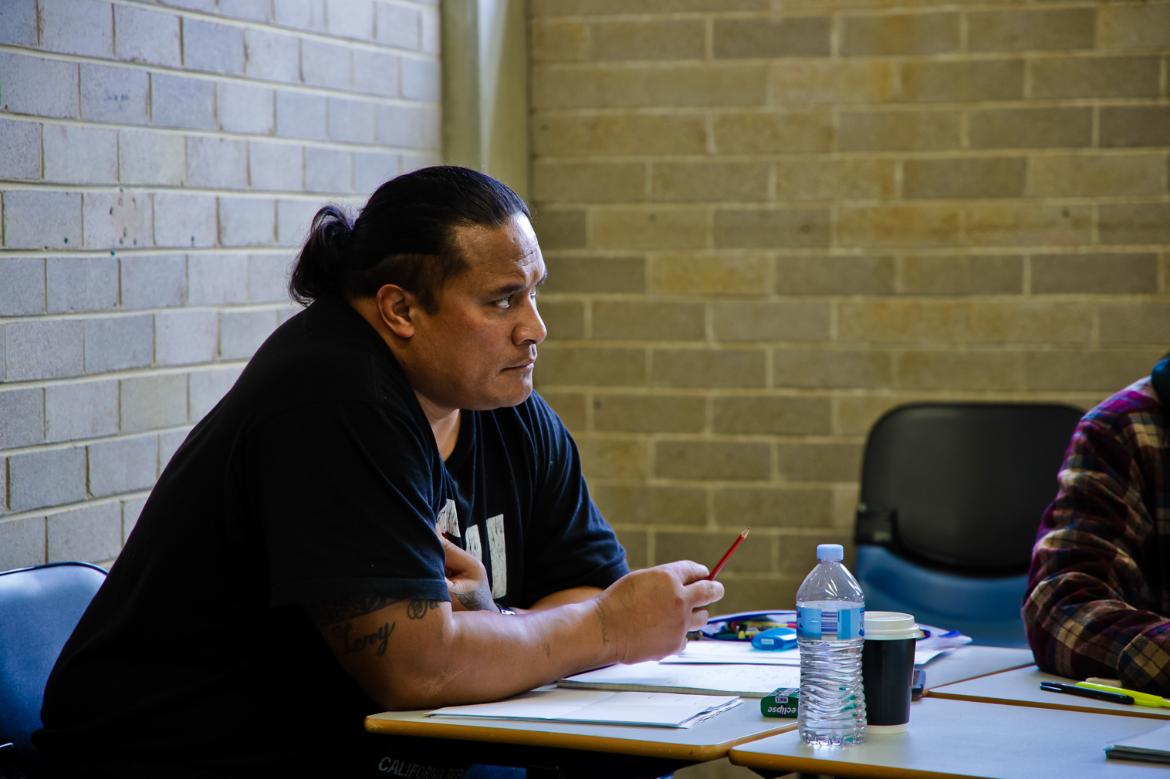
A Bankstown sports coach is challenging stereotypes in the fashion industry by harnessing a TAFE NSW fashion course to help his community launch a clothing business.
Setaleki ‘Seta’ Teuhema is a basketball coach at Kings School who, after becoming tired of buying new sport shorts that ripped constantly, used the lockdown period to enrol in a Certificate III in Applied Fashion Design and Technology at TAFE NSW Lidcombe so he could repair his own sportswear.
What started as a hobby for 46-year-old Seta (pictured above) as now transformed into an international business idea for his community back in Tonga.
Seta aid “I never realised how much we need practical, hands-on skills like sewing simple garments, especially in a climate like this where material face masks are the new normal.”
“I’m planning to return to my home country of Tonga in the near future to teach Basketball and I want to help my community learn how to sew and feel confident mending their own clothes and sports gear with the skills I have acquired,” he said.
Seta also learnt how to make face masks in line with NSW Health Guidelines and use natural dyes like beetroot juice and coffee to colour the masks in his TAFE NSW class.
Seta is taking advantage of the clothing retail industry, which is estimated to be worth $16.5 billion in Australia alone.
TAFE NSW Head Teacher of Fashion, Fiona Lloyd, said the course was great for people looking to get a head start in the industry.
“The Certificate III in Applied Fashion Design and Technology offers students an introduction to the exciting world of fashion, which will challenge them to reconsider the way they think about the design process,” Ms Lloyd said.
“Students learn hands-on skills like how to design, construct a garment, patternmaking, fabric identification as well as an introduction to computer aided design.”
To enrol or enquire about the fashion courses offered at TAFE NSW, visit https://www.tafensw.edu.au or call 131 601.
Earn While You Learn: Ned's Running Start To A Career In Council
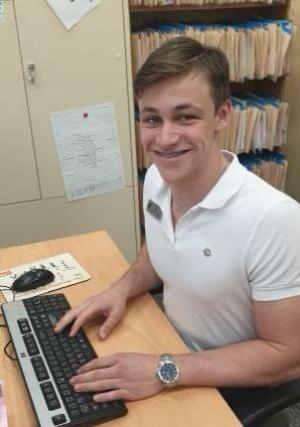 A Narrandera high school student who has enjoyed a hands-on position in local government for two years has thanked TAFE NSW for helping him “earn and learn”.
A Narrandera high school student who has enjoyed a hands-on position in local government for two years has thanked TAFE NSW for helping him “earn and learn”.
Ned McLeod, 17, is in the second year of a business administration school-based traineeship with Narrandera Shire Council, a unique arrangement where students work on-the-job one day a week, study at TAFE NSW one day a week, and attend school for the remaining three days.
Ned hopes the practical skills and experience he has gained gives him the competitive edge to transition into a full-time job with the council when he completes his HSC next month.
“I did work experience with council in year 10 and they mentioned the traineeship to me … the idea of leaving school with a qualification seemed really appealing,” Ned said.
“It’s really helping me build up a strong work ethic and to be qualified faster. To have the opportunity to get workplace skills before leaving school is a huge advantage and I just want to see where it takes me.”
The born-and-bred local hopes to be offered a full-time position at council after completing his HSC and eventually train to become a town planner.
He said the chance to learn a different side of the industry through a Certificate III in Business Administration at TAFE NSW Narrandera, and then apply it to the job, was also invaluable.
“Town planning is just so interesting and I like the idea you can do a job that helps shape the future of your community,” Ned said.
Narrandera Shire Council general manager George Cowan praised the school-based traineeships concept and said TAFE NSW Narrandera was a lifeline for the local business community.
“Ned is a decent young guy and he’s done very well in the structure here,” Mr Cowan said.
“None of this would have happened without having access to TAFE NSW locally and having the Connected Learning Centre here has been a real boon to the local business community.”
To find out more about studying a school-based apprenticeship or traineeship at TAFE NSW, speak to your school career advisor, phone 13 16 01 or visit www.tafensw.edu.au/ambition
Smooth Sailing: How TAFE NSW Helped Adam Anchor His Career In New Waters
A former Moruya jeweller has anchored his career in new waters, pursuing his passion for maritime with the help of TAFE NSW.
More than two decades after studying to be a jeweller at TAFE NSW Enmore Design Centre, father-of-two Adam Rehardt decided to nail his colours to a new mast, completing a Certificate II in Maritime Operations under the guidance of TAFE NSW Moruya teacher and legendary local seaman Captain Col Tritton.
Mr Rehardt is volunteering at Marine Rescue NSW to build up his sea hours as he sails towards a full-time career in maritime.
The Australian maritime sector has an estimated annual revenue of $6.88 billion, according to the Australian Industry and Skills Committee, with the industry’s 7700 professionals averaging a gross weekly salary of $2123.
Mr Rehardt worked as a jeweller in his family store, The Moruya Jeweller, before purchasing the business from his father in 2007. The born-and-bred local closed the store in 2019 and completed a Certificate II in Maritime Operations and TAFE NSW Moruya.
“I’ve always been around the ocean and into scuba and free diving, and I’m also very passionate about the environmental side of the ocean,” he said. “I was looking through a TAFE NSW brochure one day and saw the maritime course and just enrolled on the spot.
“To learn under Captain Col was awesome; the course was so hands-on and has a thirst for passing on as much knowledge as he can so that I can relaunch my career.
“He helped me get a voluntary position at Marine Rescue NSW, which allows me to drive a multitude of vessels in different situation and to also give back to the community.”
Mr Rehardt hopes to use his training and experience to secure a maritime position with NSW National Parks and Wildlife Service.
Captain Tritton, who has almost 50 years’ ocean experience as a Navy diver, Customs official and with the Water Police, said the Certificate II in Maritime Operations allowed graduates to take a commercial vessel up to 15 miles out to sea.
“This is a commercial ticket which means that graduates can find work in a number of areas, including on charter boats doing fishing trips or whale watching tours,” Captain Tritton said.
“Adam was a fantastic student and it’s great to see him furthering his experience and contributing to the community through Marine Rescue NSW.”
To find out more about studying Maritime Operations at TAFE NSW, phone 13 16 01 or visit www.tafensw.edu.au.
What are message sticks? Senator Lidia Thorpe continues a long and powerful diplomatic tradition
Piers Kelly, University of New England and Wunyungar, Indigenous KnowledgeThis week, newly appointed Greens senator Lidia Thorpe entered the chamber with one fist raised. In her other hand, she carried a large message stick with 441 carefully painted marks.
The lines represented each of the First Nations people who have died under police supervision since the 1991 Royal Commission into Deaths in Custody. The first Indigenous senator from Victoria, Thorpe is a Gunnai and Gunditjmara woman with a history of fighting for justice on behalf of Aboriginal people.
Last year, Alwyn Doolan, a Gooreng Gooreng and Wakka Wakka man (and co-author of this article) brought three message sticks to deliver to the Prime Minister representing Creation, Colonisation and Healing.
He carried them to Canberra all the way from Cape York, walking the long way round via Tasmania and Melbourne in a journey of over 8,500 kilometres. His intention was to submit a tribal law notice to the Australian government, to declare First Nations sovereignty, and open a new dialogue with the First Nations of this land.
These two events continue a powerful pre-Invasion tradition, when message sticks were sent between distant communities to maintain diplomatic relations.
Treacherous Journeys
Traditionally, the Nation sending the message would appoint an individual to serve as a messenger to travel vast distances across land or water to meet a recipient. The sticks were small enough to carry a long way. Many of the signs on the stick had fixed meanings while others were intended to be decorative.
Colours such as red ochre or white pipe-clay also added meaning, and even the type of timber had significance. Along with the message, they might also tell a story of where the messenger had come from, depicting the journey as a map.
When the messenger made contact with the intended recipient, they would deliver the message verbally, referring to the signs on the stick to both illustrate and emphasise a memorised oral statement.
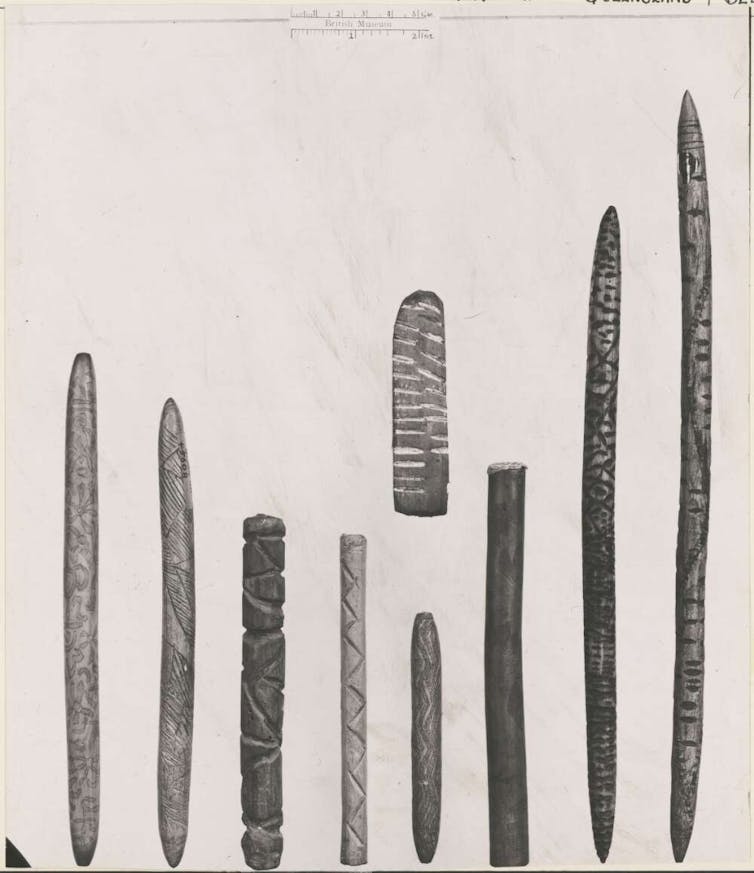
Messengers were often men but in some regions women were known to take on this role. If you were a messenger you had a huge responsibility for your own people, and those from other nations were obliged to recognise you as an ambassador, to look after you and guarantee a safe passage.
Message sticks could be on any topic, but what they always had in common was the fact they demanded acknowledgement and mutual respect. They were often announcements about ceremonies, such as initiations or funerals. They could also be for establishing political partnerships, requesting emergency assistance, declaring war, organising hunting, or trading vital resources.
Read more: Friday essay: lessons from stone – Indigenous thinking and the Law
Messengers would set out on foot, sometimes journeying for days or weeks on end. The mission was dangerous. There are over 500 First Nations within Australia and crossing into a foreign territory without permission could be punishable by death. But envoys had diplomatic immunity and their message stick was a bit like a passport in the modern sense.
In order to show peaceful intentions, they displayed the message stick clearly from a safe distance. A common technique was to hang it from the tip of a spear or to tuck it into a headband. Body paint could also be used to signal a special status.
Some past anthropologists held that only “civilised” nations could be seen to possess writing, so downplayed the value of message sticks as communication. Others saw them as precursors to alphabetic script or letters.
Message sticks have even been sent through the mail service. During the second world war, an Indigenous soldier sent a message stick home to his family through the military post, once it had been approved by a mystified government censor.

Carrying Meaning
Australia’s First Nations have always been connected through shared kinship systems, histories, Dreamings, values and symbols. This is why the signs on message sticks frequently depict common points of reference with rich cultural associations — like landscapes, totemic animals, and ceremonial grounds — that wouldn’t require explanation.
As Indigenous people began to encounter new phenomena like ships, livestock and homesteads these were symbolised on message sticks. Individuals had signatures to guarantee the message came from them and would be addressed to the correct person.
Shared understandings helped ensure a message could be correctly interpreted, even when a messenger was not available to explain it.
In some places, white settlers learned from First Nations peoples how to make message sticks and used them to facilitate diplomatic communications with communities.
Read more: New coins celebrate Indigenous astronomy, the stars, and the dark spaces between them
Political Messages
During the period of colonial dispossession, First Nations people have introduced adaptations and innovations. They began to make use of non-native timbers and took advantage of iron tools.
Message sticks also began featuring Western symbols. Alphabet letters, playing card suits and police insignias have been used sparingly. And from the middle of the 20th century, Indigenous envoys began to bring message sticks to government leaders.
In 1951, Indigenous men sent a message stick to Robert Menzies to solidify an alliance between the Tiwi islands and Canberra. Gough Whitlam received one in 1974 demanding land rights, and Bob Hawke was given one in 1983.
Yolŋu leaders gave Prince Charles a message stick in 2018 during his visit to Yirrkala, asking him to intervene in Treaty negotiations.
When Alwyn Doolan brought his message sticks to Scott Morrison last year — after a gruelling journey — the Prime Minister defied precedent by declining to meet with him.![]()
Piers Kelly, Linguistic anthropologist, University of New England and Wunyungar, Indigenous knowledge bearer, Indigenous Knowledge
This article is republished from The Conversation under a Creative Commons license. Read the original article.
At Palm Beach Alwyn was greeted by young Taimana and walked with The Message Stick Walk flag. A J Guesdon photo.
Cheese 'n' crackers! Concerns deepen for the future of Australian children's television
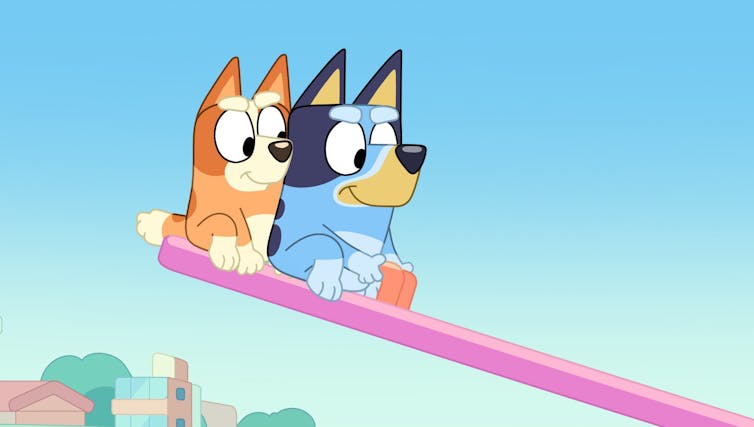
Today ABC, BBC Studios and Screen Australia announced series three of the award-winning animation series Bluey will commence production in Brisbane later this year.
But despite Bluey’s global success, policy changes announced yesterday mean that we may see fewer Australian-made children’s shows on broadcast TV in the future.
The federal government has scrapped quotas for minimum hours of local children’s content for commercial television networks. Foxtel’s obligation to Australian content has also been halved.
These changes represent a rapid unravelling of regulatory infrastructure established in the 1970s — and refined over decades — to support production and broadcast of quality Australian children’s content.
Responding to the policy changes, Australian Children’s Television Foundation (ACTF) CEO Jenny Buckland explained:
The argument about children’s content quotas has been going ever since they were introduced nearly 40 years ago. The broadcasters never wanted to do it and they didn’t treat the shows well.
Read more: Save our screens: 3 things government must do now to keep Australian content alive
Changes To TV Content Regulation
Under the existing system, commercial networks must abide by strict requirements to broadcast a certain amount of children’s content each year: 130 hours for pre-school children, and 260 hours for children under 14, including at least 25 hours of new drama.
From 2021, commercial networks will have no such obligation.
Children’s content quotas were suspended in April 2020, a decision Minister for Communications, Cyber Safety and the Arts Paul Fletcher said was in response to COVID-19.
Now a decision initially described as “an emergency red tape reduction measure” has been enshrined into policy.
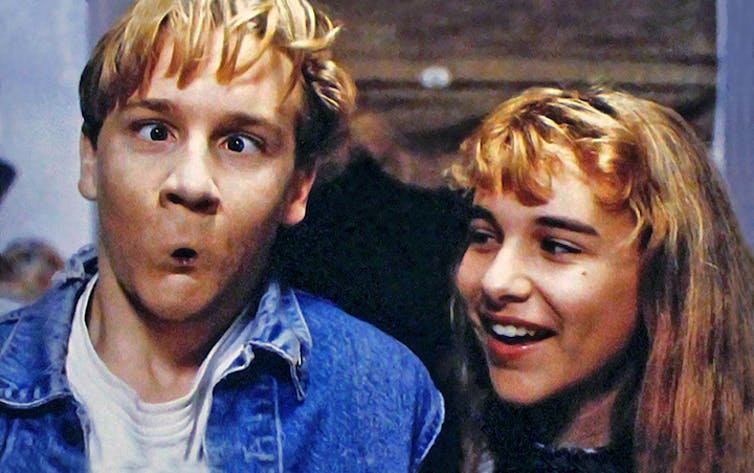
Read more: Coronavirus TV 'support' package leaves screen writers and directors even less certain than before
Strength In Numbers
The government’s decision to remove children’s quotas responds to intense lobbying from commercial networks. In February 2020, Seven declared it planned to halt the production of Australian children’s content, a decision that would likely have resulted in a breach of children’s content quotas in 2021 if the current system was sustained. Seven’s Chief Executive explained he wanted the government to take “immediate action” to remove the quotas.
In 2017, the chief executives of Seven, Nine and Ten advocated together at a parliamentary inquiry for the removal of children’s content quotas.
They argued children weren’t watching their children’s programming. Indeed, many children’s programs on commercial networks don’t rate well. This may relate to the cheaply produced, culturally non-specific animated programs made to meet the quotas.
ACTF CEO Jenny Buckland notes that over the past decade, commercial broadcasters have halved their spending on children’s drama. International co-productions also count towards the quotas, resulting in a surfeit of “co-produced animated series based on international concepts”.
The networks also argue the rising popularity of streaming services has made the quota system outdated. Indeed, an increasing number of Australian children are turning to streaming services such as Netflix and YouTube, however the Australian Communication and Media Authority’s research has found that children still watch broadcast TV programs made specifically for them.
Read more: TV has changed, so must the way we support local content
Where The ABC Fits In
Bluey is the most popular show in the history of the ABC’s streaming app ABC iView, demonstrating there is demand for quality local children’s content.
But rather than seeing this as an endorsement, commercial broadcasters claim the popularity of children’s content on the ABC diminishes the need for quotas.
However, public broadcasters, the ABC and SBS, are not obligated to produce or broadcast a certain amount of local children’s content (rather than quotas, they have internal targets underpinned by their charters). This means the ABC can pull funding from the children’s television budget as it sees fit. Local content targets on children’s channel ABC ME were reduced to 25% (from 50%) in 2015.
Budget restrictions make the ABC’s track record of quality local children’s content difficult to sustain. Government analysis in 2017 raised concerns that the ABC may have “reduced its commitment to producing children’s content”.
Despite the ABC’s role in broadcasting quality Australian content, and even directly helping with remote education during the pandemic, the government has pressed pause on the indexation of ABC funding until July 2022. This means by end of the financial year (2020–21), the ABC’s operational funding base will have reduced by 10% since 2013.
Children’s content was a key target of a recent round of redundancies at the ABC. June saw the closure of Melbourne children’s division ME TV and the cancellation of kids’ show Definitely Not News. The Media Entertainment and Arts Alliance warns changes to production quotas could “mean the demise of children’s content on commercial TV, leaving a cash-strapped ABC to pick up the slack”.
Defending Local Children’s TV
The government has announced a welcome A$20 million in funding for the ACTF for children’s content, supplemented by $30 million in funding for Screen Australia.
Jenny Buckland notes,
we’ll be working very hard with producers to try and open those commissioning doors to new content, and tracking what happens to production over the 2-year period.
Perhaps this funding will stave off the end of local children’s content for now. Though the policy and budgetary ecosystem that supports a robust domestic children’s content sector is in flux, Buckland is still hopeful:
… there needs to be Australian children’s content on all the places that children go to watch content — that includes having well-resourced public broadcasters with a major commitment to kids, as well as content on commercial video-on-demand platforms and other destinations. We were hoping there would be Australian content expenditure requirements on these platforms, and the door might still be open for that.
Jessica Balanzategui, Lecturer in Cinema and Screen Studies, Swinburne University of Technology; Joanna McIntyre, Lecturer in Media Studies, Swinburne University of Technology, and Liam Burke, Associate Professor and Cinema and Screen Studies Discipline Leader, Swinburne University of Technology
This article is republished from The Conversation under a Creative Commons license. Read the original article.
Avicenna: the Persian polymath who shaped modern science, medicine and philosophy
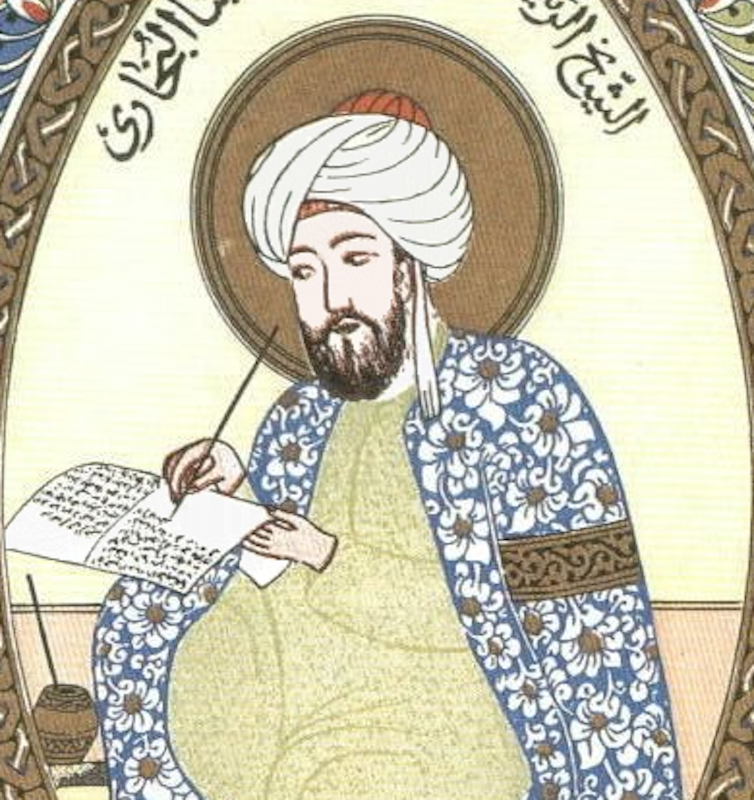
Over a thousand years ago, Nuh ibn Mansur, the reigning prince of the medieval city of Bukhara, fell badly ill. The doctors, unable to do anything for him, were forced to send for a young man named Ibn Sina, who was already renowned, despite his very young age, for his vast knowledge. The ruler was healed.
Ibn Sina was an 11th century Persian philosopher, physician, pharmacologist, scientist and poet, who exerted a profound impact on philosophy and medicine in Europe and the Islamic world. He was known to the Latin West as Avicenna.
Avicenna’s Canon of medicine, first translated from Arabic into Latin during the 12th century, was the most important medical reference book in the West until the 17th century, introducing technical medical terminology used for centuries afterwards.

Avicenna’s Canon established a tradition of scientific experimentation in physiology without which modern medicine as we know it would be inconceivable.
For example, his use of scientific principles to test the safety and effectiveness of medications forms the basis of contemporary pharmacology and clinical trials.
Avicenna has been in the news recently due to his work on contagions. He produced an early version of the germ theory of disease in the Canon where he also advocated quarantine to control the transmission of contagious diseases.
Uniquely, Avicenna is the rare philosopher who became as influential on a foreign philosophical culture as his own. He is regarded by some as the greatest medieval thinker.
Read more: Explainer: what Western civilisation owes to Islamic cultures
Maverick And Prodigious

He was born Abdallāh ibn Sīnā in 980AD in Bukhara, (present day Uzbekistan, then part of the Iranian Samanid empire). Avicenna was prodigious from youth, claiming in his autobiography to have mastered all known philosophy by 18.
Avicenna’s output was extraordinarily prolific. One estimate of his body of work counts 132 texts. These cover logic, natural philosophy, cosmology, metaphysics, psychology, geology, and more. Some of these texts he wrote while on horseback, travelling from one city to another!
His work was a virtuosic kind of encylopedism, gathering the various traditions of Greek late antiquity, the early Islamic period and Iranian civilisation into one rational knowledge system covering all of reality.
Avicenna’s texts were forged out of the colossal Graeco-Arabic translation movement that took place in medieval Baghdad. They then played a key role in the Arabic to Latin translation movement that brought Aristotle’s philosophy back, in a highly enriched manner, into Western thought.
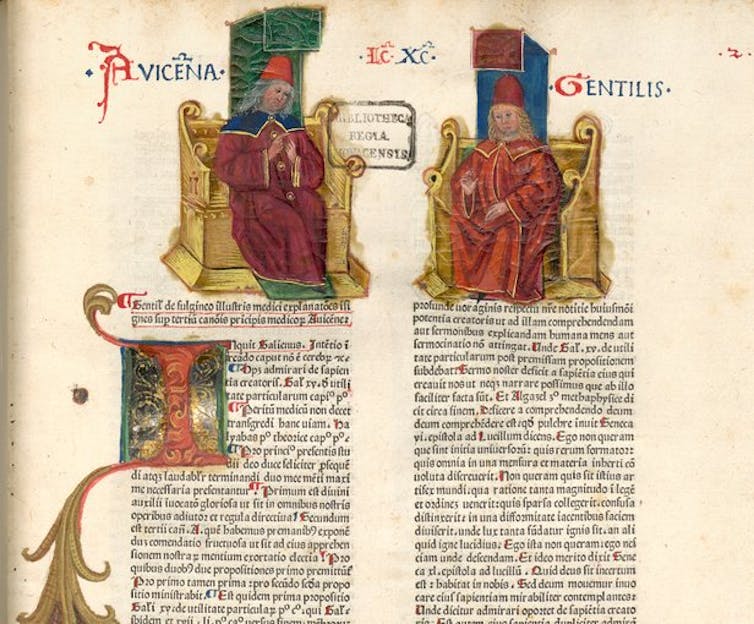
This was a chapter in the story of large-scale transmission of knowledge from the Islamic world to Europe.
From the 12th century on, Avicenna shaped the thought of major European medieval thinkers. Thomas Aquinas’s writings feature hundreds of quotations from Avicenna regarding issues such as God’s providence. Aquinas also sought to refute some of Avicenna’s positions such as that which argued the world was eternal.
Book Of Healing
Avicenna’s Kitāb al-shifā , The Book of Healing, was as influential in Latin as his medical Canon.
Divided into sections covering logic, science, mathematics and metaphysics, it produced highly influential theses on the distinction between essence and existence and the famous Flying Man thought experiment, which aims to establish how the soul is innately aware of itself.

Read more: Four centuries of trying to prove God’s existence
A Medical Pioneer
Avicenna’s Canon brilliantly synthesises Islamic medicine with that of Hippocrates (460 – 370 BC) and Galen (129 – 200 AD). There are also elements of ancient Persian, Mesopotamian and Indian medicine. This was supplemented by Avicenna’s extensive medical experiences.

In the Canon, Avicenna introduced diagnoses and treatments for illnesses unknown to the Greeks, being the first doctor to describe meningitis. He made new arguments for the use of anaesthetics, analgesics, and anti-inflammatory substances.
Read more: Forget folk remedies, Medieval Europe spawned a golden age of medical theory
Looking forward to modern notions of disease prevention, Avicenna proposed adjustments in diet and physical exercise could heal or prevent illnesses.
Avicenna was also vital to the development of cardiology, pulsology, and our understanding of cardiovascular diseases.
Avicenna’s detailed descriptions of capillary flow and arterial and ventricular contractions in the cardiovascular system (the blood and circulatory system) assisted the Arab-Syrian polymath Ibn al Nafis (1213-1288), who became the first physician to describe the blood’s pulmonary circulation, the movement of blood from the heart to the lungs and back again to the heart.
This happened in 1242, centuries before scientist William Harvey arrived at the same conclusion in 17th century England.
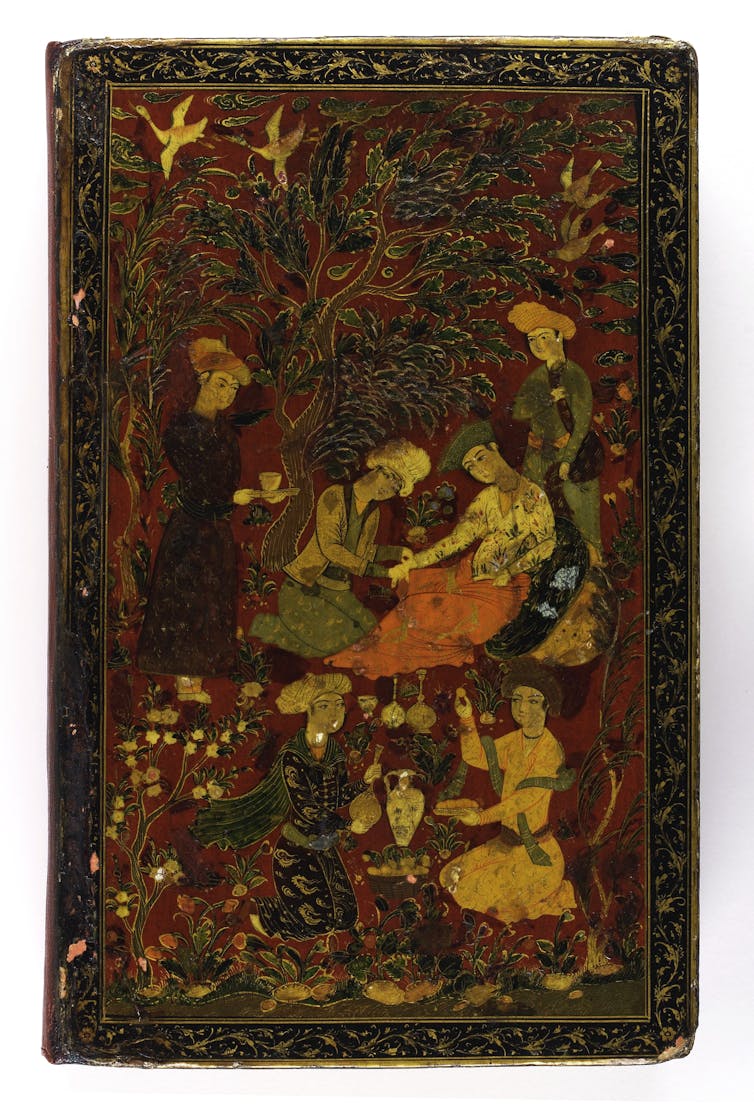
Holistic Medicine
Another innovative aspect of Avicenna’s Canon is its exploration of how our body’s well-being depends on the state of our mind, and the interaction between the heart’s health and our emotional life.
This connection has been seen in the last few months, with doctors describing increases in heart damage due to the psycho-emotional pressures of the pandemic.
Avicenna’s advocacy for an interrelated, organic and systems-based understanding of health gives his thought universal, ongoing relevance.![]()
Darius Sepehri, Doctoral Candidate, Comparative Literature, Religion and History of Philosophy, University of Sydney
This article is republished from The Conversation under a Creative Commons license. Read the original article.
Happy birthday Instagram! 5 ways doing it for the 'gram has changed us

Tomorrow marks Instagram’s tenth birthday. Having amassed more than a billion active users worldwide, the app has changed radically in that decade. And it has changed us.
1. Instagram’s Evolution
When it was launched on October 6, 2010 by Kevin Systrom and Mike Krieger, Instagram was an iPhone-only app. The user could take photos (and only take photos — the app could not load existing images from the phone’s gallery) within a square frame. These could be shared, with an enhancing filter if desired. Other users could comment or like the images. That was it.
As we chronicle in our book, the platform has grown rapidly and been at the forefront of an increasingly visual social media landscape.
In 2012, Facebook purchased Instagram for a deal worth a $US1 billion (A$1.4 billion), which in retrospect probably seems cheap. Instagram is now one of the most profitable jewels in the Facebook crown.
Instagram has integrated new features over time, but it did not invent all of them.
Instagram Stories, with more than half a billion daily users, was shamelessly borrowed from Snapchat in 2016. It allowed users to post 10-second content bites which disappear after 24 hours. The rivers of casual and intimate content (later integrated into Facebook) are widely considered to have revitalised the app.
Similarly, IGTV is Instagram’s answer to YouTube’s longer-form video. And if the recently-released Reels isn’t a TikTok clone, we’re not sure what else it could be.
Read more: Facebook is merging Messenger and Instagram chat features. It's for Zuckerberg's benefit, not yours
2. Under The Influencers
Instagram is largely responsible for the rapid professionalisation of the influencer industry. Insiders estimated the influencer industry would grow to US$9.7 billion (A$13.5 billion) in 2020, though COVID-19 has since taken a toll on this as with other sectors.
As early as in 2011, professional lifestyle bloggers throughout Southeast Asia were moving to Instagram, turning it into a brimming marketplace. They sold ad space via post captions and monetised selfies through sponsored products. Such vernacular commerce pre-dates Instagram’s Paid Partnership feature, which launched in late-2017.

The use of images as a primary mode of communication, as opposed to the text-based modes of the blogging era, facilitated an explosion of aspiring influencers. The threshold for turning oneself into an online brand was dramatically lowered.
Instagrammers relied more on photography and their looks — enhanced by filters and editing built into the platform.
Soon, the “extremely professional and polished, the pretty, pristine, and picturesque” started to become boring. Finstagrams (“fake Instagram”) and secondary accounts proliferated and allowed influencers to display behind-the-scenes snippets and authenticity through calculated performances of amateurism.
3. Instabusiness As Usual
As influencers commercialised Instagram captions and photos, those who had owned online shops turned hashtag streams into advertorial campaigns. They relied on the labour of followers to publicise their wares and amplify their reach.
Bigger businesses followed suit and so did advice from marketing experts for how best to “optimise” engagement.
In mid-2016, Instagram belatedly launched business accounts and tools, allowing companies easy access to back-end analytics. The introduction of the “swipeable carousel” of story content in early 2017 further expanded commercial opportunities for businesses by multiplying ad space per Instagram post. This year, in the tradition of Instagram corporatising user innovations, it announced Instagram Shops would allow businesses to sell products directly via a digital storefront. Users had previously done this via links.

Read more: Friday essay: Twitter and the way of the hashtag
4. Sharenting
Instagram isn’t just where we tell the visual story of ourselves, but also where we co-create each other’s stories. Nowhere is this more evident than the way parents “sharent”, posting their children’s daily lives and milestones.
Many children’s Instagram presence begins before they are even born. Sharing ultrasound photos has become a standard way to announce a pregnancy. Over 1.5 million public Instagram posts are tagged #genderreveal.
Sharenting raises privacy questions: who owns a child’s image? Can children withdraw publishing permission later?
Sharenting entails handing over children’s data to Facebook as part of the larger realm of surveillance capitalism. A saying that emerged around the same time as Instagram was born still rings true: “When something online is free, you’re not the customer, you’re the product”. We pay for Instagram’s “free” platform with our user data and our children’s data, too, when we share photos of them.

Read more: The real problem with posting about your kids online
5. Seeing Through The Frame
The apparent “Instagrammability” of a meal, a place, or an experience has seen the rise of numerous visual trends and tropes.
Short-lived Instagram Stories and disappearing Direct Messages add more spaces to express more things without the threat of permanence.
Read more: Friday essay: seeing the news up close, one devastating post at a time
The events of 2020 have shown our ways of seeing on Instagram reveal the possibilities and pitfalls of social media.
In June racial justice activism on #BlackoutTuesday, while extremely popular, also had the effect of swamping the #BlackLivesMatter hashtag with black squares.
Instagram is rife with disinformation and conspiracy theories which hijack the look and feel of authoritive content. The template of popular Instagram content can see familiar aesthetics weaponised to spread misinformation.
Ultimately, the last decade has seen Instagram become one of the main lenses through which we see the world, personally and politically. Users communicate and frame the lives they share with family, friends and the wider world.
Read more: #travelgram: live tourist snaps have turned solo adventures into social occasions ![]()
Tama Leaver, Associate Professor in Internet Studies, Curtin University; Crystal Abidin, Senior Research Fellow & ARC DECRA, Internet Studies, Curtin University, Curtin University, and Tim Highfield, Lecturer in Digital Media and Society, University of Sheffield
This article is republished from The Conversation under a Creative Commons license. Read the original article.
With his signature guitar style, Eddie Van Halen changed rock music
Ken Murray, University of MelbourneThe legendary guitarist Eddie Van Halen has died aged 65. One of the most influential guitarists of the modern age, Van Halen was known for his mastery of the two-handed tapping technique and for bringing the virtuosic rock guitar solo back into the popular music mainstream in the late 70s and 1980s.
One of the great innovators, Van Halen formed a bridge between 1970s rock styles and heavy metal sounds of the 1980s. He delivered his best work with a nonchalance that belied the training and dedication driving him and his band to succeed.
Born in the Netherlands in 1955, Van Halen came from a musical family. His father played saxophone and clarinet professionally and ensured Van Halen and his older brother, Alex, started piano lessons from a young age.
The boys’ training in classical music and theory would influence Van Halen’s guitar playing, particularly the famous two-handed, finger tapping technique, where harmonic ideas derived from the keyboard found new expression on the electric guitar.
Read more: Redefining the rock god – the new breed of electric guitar heroes
Young Tour De Force
The family immigrated to the US in 1962 and the young Van Halen brothers later discovered rock music, with Jimi Hendrix and Eric Clapton as early heroes.
In his first Guitar Player magazine interview in 1978, Van Halen mentioned Clapton as a formative influence, having learnt his solos note for note.
In 1972, while still in high school, the brothers formed the band Mammoth, hiring a public address system from David Lee Roth. Van Halen originally sang as well as playing guitar, but he tired of combining duties so Roth (and his PA) joined the band.
Mammoth caught the attention of Kiss’s Gene Simmons, who financed an early demo tape, and then producer Ted Templeman who signed the group to a record deal. Their first album, Van Halen (1978), was recorded quickly, drawing on their live sound and set list.
It was the album’s second track, Eruption, that captured the attention of guitarists.
This tour de force shows Van Halen had already developed his signature style by his early 20s. Opening power chords signal a call to attention while licks based on blues and rock phrases are transformed through sheer speed and intensity. The tone has a power, presence and clarity rarely heard in rock guitar recordings of the time.
The climax of the piece is the famous two-handed tapping section. With a concluding dive bomb – a pitch descent courtesy of subtle manipulation of the whammy bar, Van Halen ushered in a new era in electric guitar playing.
True Innovation
The sounds and techniques used in Eruption seemed to be only possible on the electric guitar, exploiting the instrument’s responsiveness and tactile immediacy.
But Van Halen continued to seek new means of musical expression and on Van Halen II (1979), he gave us an example of what was possible when his virtuosic approach was adapted to the acoustic guitar.
Van Halen was always modifying his guitars. Early experiments led to him creating his “Frankenstein guitar” in 1974, fusing the neck and humbucker pickup from a Gibson guitar onto a Fender Stratocaster body. He added the stripes that became his signature.
He remained involved in designing new instruments throughout his career, collaborating with makers such as Music Man, Charvel and Fender.
‘The Brown Sound’
Van Halen’s sound was loud and distorted but also clear and focused. Often referred to as the “brown” sound for its feeling of organic warmth, this sound has gone on to inspire generations of guitarists.
The band’s biggest commercial success was the album 1984, where Van Halen turned to keyboards in both writing and recording.
On the single Jump, keyboard chords ground the song but an improvised, high energy electric guitar solo reminds the listener of Van Halen’s virtuosity as he leads the band into a Bach-inspired, keyboard fantasy.
From 1978 to 1998, the band released 11 studio albums, with their 12th and final album, A Different Kind of Truth (2012), appearing 13 years later. But it is the searing lead break on Michael Jackson’s Beat It (1983) that bought Van Halen to global attention.
Jammed into 32 seconds, Van Halen’s solo is a masterpiece of construction, featuring pitch manipulation with the whammy bar, squealing harmonics, rapid-fire two-handed tapping, scurrying scalar licks (or quick scales) and a final ascending tremolo line that soars to the upper reaches of the fretboard and makes you wonder what just happened.
It is one of the most famous rock guitar solos around.
Van Halen was diagnosed with tongue cancer in 2000, and declared cancer free in 2002. In 2019, it was first reported he had been battling throat cancer for five years.
In 2015, Rolling Stone named Van Halen as number eight on a list of the world’s greatest guitarists of all time. But as his career shows, his talent wasn’t simply in his musical virtuosity, but in his innovation: creating a brand new sound for rock music, but also in the design of the guitar itself.![]()
Ken Murray, Associate Professor in Guitar, Melbourne Conservatorium of Music, University of Melbourne
This article is republished from The Conversation under a Creative Commons license. Read the original article.
Taking The STING Out Of MND
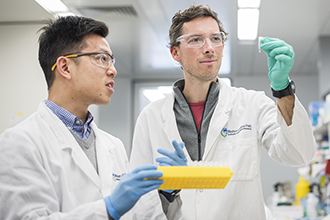
$750 Million RPA Hospital Redevelopment Fast-Tracked
Plans For The New $780 Million John Hunter Hospital Building Unveiled
- a new emergency department
- critical care services (adult and paediatric)
- operating theatres, interventional and imaging services
- birthing suite and inpatient maternity unit
- neonatal intensive care and special care nursery
- larger and redeveloped inpatient units and
- rooftop helipad.
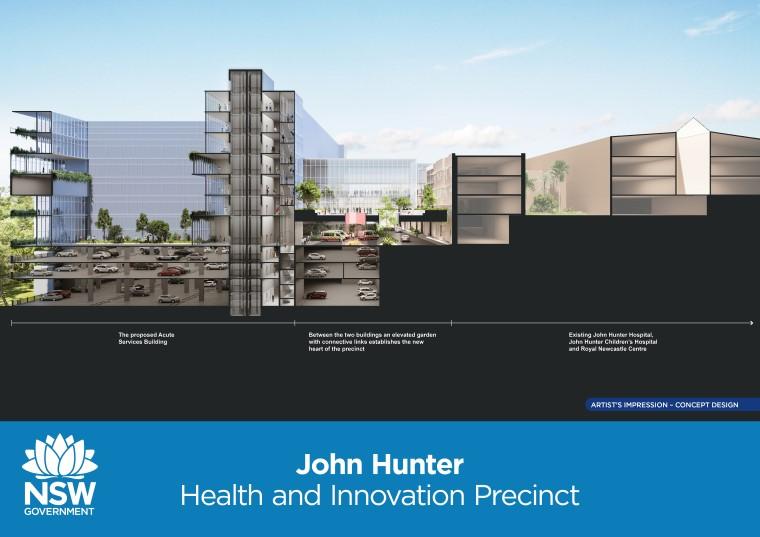
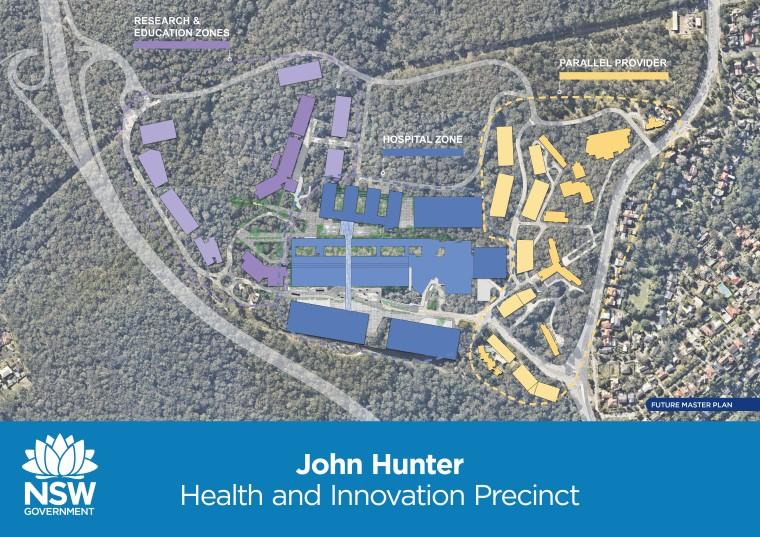
Nitrous Oxide Emissions Pose An Increasing Climate Threat
Study Confirms Genetic Link In Cerebral Palsy
Moon's Magnetic Crust Research Sees Scientists Debunk Long-Held Theory
Disclaimer: These articles are not intended to provide medical advice, diagnosis or treatment. Views expressed here do not necessarily reflect those of Pittwater Online News or its staff.
